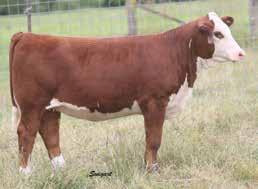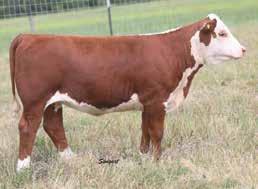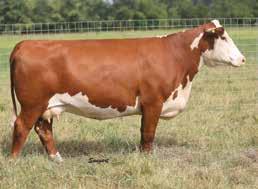REPLACEMENTS
How High is Too High?
Boosting market leverage with Hereford-sired baldies.
The front end of record cattle prices.


REPLACEMENTS
How High is Too High?
Boosting market leverage with Hereford-sired baldies.
The front end of record cattle prices.





The cost of gain and feed conversions were the best in the program and by far better than the feedlot average.
If you breed your black cows to Churchill bulls, you will increase the demand for your calves and replacement females. We will get you lined up with feeders who are searching for Churchill genetics.

Just give us a call.
Tuesday, January 23


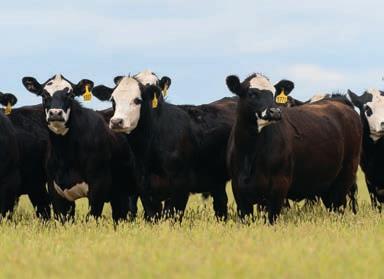

| American Hereford Association

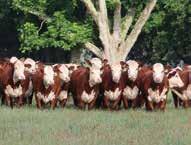

Address:
11500 N. Ambassador Dr., Ste. 410, Kansas City, MO 64153 816-842-3757 • Fax 816-243-1314 hworld@hereford.org • Hereford.org
AHA BOARD OF DIRECTORS
President
Bill Goehring, Libertyville, Iowa
Vice president
Wyatt Agar, Thermopolis, Wyo.
Directors
Term expires 2023
Whitey Hunt, Madison, Ga.
Becky King-Spindle, Moriarty, N.M.
Term expires 2024
Jerome Ollerich, Winner, S.D.
Bob Schaffer, Spotsylvania, Va.
Term expires 2025
Chad Breeding, Miami, Texas
Lou Ellen Harr, Jeromesville, Ohio
Travis McConnaughy, Wasola, Mo.
Term expires 2026
Jim Coley, Lafayette, Tenn.
Hampton Cornelius, LaSalle, Colo.
Austin Snedden, Maricopa, Calif.
ADMINISTRATIVE STAFF
Executive vice president
Jack Ward, jward@hereford.org
Chief operating officer and director of breed improvement
Shane Bedwell, sbedwell@hereford.org
Chief financial officer
Leslie Mathews, lmathews@hereford.org
Director of records department
Stacy Sanders, ssanders@hereford.org
Director of commercial programs
Trey Befort, tbefort@herefordbeef.org
Director of youth activities and foundation
Amy Cowan, acowan@hereford.org
National shows coordinator and youth activities assistant
Bailey Clanton, bclanton@hereford.org
Associate director of youth marketing and education
Chloé Fowler, cfowler@hereford.org
Education and information services coordinator and records supervisor
Laura Loschke, lloschke@hereford.org
Director of communications and digital content
Taylor Belle Matheny, tmatheny@hereford.org
Audio-visual specialist
Kelsey Vejraska, kvejraska@hereford.org
Office assistant and event coordinator
Emily Wood, ewood@hereford.org
| Certified Hereford Beef Staff
President and chief executive officer
Amari Seiferman, aseiferman@herefordbeef.org
Brand manager
Ty Ragsdale, tragsdale@herefordbeef.org
| Commercial Programs
Director of commercial programs
Trey Befort, tbefort@herefordbeef.org
Commercial marketing partner - Western Region
Jake Drost, jdrost@hereford.org
| Hereford World Staff
Director of field management and seedstock marketing

Joe Rickabaugh, jrick@hereford.org
Production manager
Caryn Vaught, cvaught@hereford.org
Executive editor
Wes Ishmael, wishmael@hereford.org
Managing editor
Sydnee Shive, sshive@hereford.org
Assistant editor
Katie Maupin Miller, kcommunicates@gmail.com
Advertising coordinator
Alison Marx, amarx@hereford.org
Creative services coordinator
Bailey Lewis, blewis@hereford.org
Editorial designer/assistant
Cindy Himmelberg, chimmelberg@hereford.org
Graphic designers
Sharon Blank and Teri Wolfgang
Contributing writers
Jamie T. Courter, Grant Crawford, Riley Greiten and Heather Smith Thomas
| Field Staff
Western Region – Contact Joe Rickabaugh Ariz., Calif., Idaho, Nev., Ore., Utah and Wash. 785-633-3188, jrick@hereford.org
Mountain Region – Kevin Murnin Colo., Mont., N.D., Wyo., central and western Canada 406-853-4638, kmurnin@hereford.org
North Central Region – Aaron Friedt Kan., Minn., Neb., and S.D. 701-590-9597, afriedt@hereford.org
Upper Midwest Region – Noah Benedict Ill., Ind., Ky., Md., Mich., Ohio, Pa., W.Va., and Wis. 217-372-8009, noahb@hereford.org
Southwest Region – Cord Weinheimer Ark., La., N.M., Okla., and Texas 830-456-3749, cweinheimer@hereford.org
Eastern Region – Tommy Coley Ala., Fla., Ga., Miss., N.C., S.C., Tenn., and Va. 815-988-7051, tcoley@hereford.org
Central Region – Joe Rickabaugh Iowa, Mo., and eastern Canada 785-633-3188, jrick@hereford.org
Northeast Region – Contact the AHA Conn., Del., D.C., Maine, Mass., N.H., N.J., N.Y., R.I., Vt., and eastern Canadian provinces
The publisher reserves the right to decline any advertising for any reason at any time without liability, even though previously acknowledged or accepted.
New look. New name. Even sharper focus on commercial cow-calf producers. Baldy Advantage replaces what were previously known as the commercial tabloid issues of Hereford World, which focused on the commercial cow-calf business. This new publication, tailored specifically for the commercial producer, represents the American Hereford Association’s (AHA) ongoing efforts to serve commercial producers more effectively.
The AHA and its members have long been committed to the unmatched value of heterosis provided by disciplined, complementary crossbreeding. They also believe Hereford’s unique inherent genetic strengths make the breed an essential component to effective, efficient crossbreeding.
Narrowing margins, along with increasing production risk and financial risk over time, demand more industry use of heterosis. Increased management of both direct and maternal heterosis optimizes inputs and outputs. Heterosis also improves economic and environmental sustainability.
For instance, compared to their straightbred counterparts, Hereford-sired half-blood beef cows last longer in the herd due in part to increased fertility and longevity. That means fewer replacements and less depreciation over time. Hereford-sired F1s also wean more pounds of calf during their production lifetimes. Heterosis increases overall production efficiency and reduces costs. All of that is tough to ignore.
Across Baldy Advantage issues, commercial producers will share the role of Hereford-sired black baldies, red baldies, tiger-stripes and Hereford-sired Brahma-cross baldies in their programs. Each issue will include information about cattle markets, tackle contemporary issues affecting the cowcalf business and more.
As you thumb through this issue, you’ll notice the user-friendly publication size and the higher quality paper. You will also find the magazine sorted by topic. For instance, you will find all the marketing articles in one section, all the animal health articles in another section and so on. Look for colored labels on the first page of each story to identify the section. AHA members will find a section toward the back of the magazine devoted to Association news and announcements.
As always, any publication worth its salt is a work in progress. Please let us know what you like or don’t and what you find useful or not.
Thanks for embarking with us on this new journey that is the Baldy Advantage.

Sincerely,
Wes Ishmael American Hereford Association executive editor and director of commercial communications
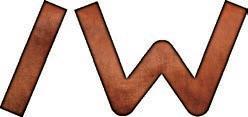
Rebuilding herds thinned by drought is on the minds of many producers, but that’s about all. Drought has improved in many parts of the country but persisted and intensified in others.
“We want to be excited about the opportunity to rebuild as an industry, but I’m not convinced we’re beyond the drought, especially in the southern half of the Great Plains,” says Rick Machen, the Paul C. Genho Endowed Chair in Ranch Management and interim director at the King Ranch Institute for Ranch Management, Kingsville, Texas. “The worst thing we could do is jump out and pay high prices for replacements and then not have the forage to support them.”
Put another way, Lee Schulz, Iowa State University (ISU) Extension livestock economist, believes the industry is at least one year away — maybe two — from fullfledged national herd expansion, assuming the current drought ends.
“Resource managers can proclaim the drought broken when soil moisture has been restored and forages have recovered to the point that they can tolerate grazing and continue their recovery,” Machen says. “How quickly this process can unfold is largely dependent on how well the resources (soil and plants) were managed prior to and during the drought. Aggressive or excessive grazing prior to the drought accelerated drought onset and its progression. Build drought resilience into your annual grazing management plan.”
Plus, Schulz explains, producers respond to profits rather than prices. By that measure, calves this fall likely represent the first profit many producers have seen in years.
“Profit means different things to different people in different situations,” Schulz says. For instance, he explains one profit calculation is defined by the money left after a business pays all costs. Producers must consider this calculation when making investment or expansion decisions. Another one views profit as the return above variable expenses, which can help guide short-term decisions on production levels.
When the opportunity does arrive for expansion, the likely sky-high prices for replacement females demand the sharpest of pencils as producers ferret out how much is too much to pay.
“There’s not a universal answer because of the diversity of financial goals and objectives for those who run cows,” Machen says.
However, there are some age-old factors that should be part of the determination.
In broad terms, Elliott Dennis, University of Nebraska-Lincoln Extension livestock economist, explains that finding the appropriate price level depends on individual producers’ expectations of current and future market conditions.
“These market conditions generally include animal productivity, calf prices,

If you don’t know unit cost of production per calf, you don’t know whether the price offered is a good one and you can’t know what can be paid for a replacement female.
— Rick Machen, King Ranch Institute for Ranch Management
If you require input Hereford genetics to compete in a black hided market, we are already there for you. Growing your input seeds for a market, years in the future. We’ve been making commercially oriented Herford genetics that blow away the national average for feedlot feed efficiency and rail hanging $value$ for generations.
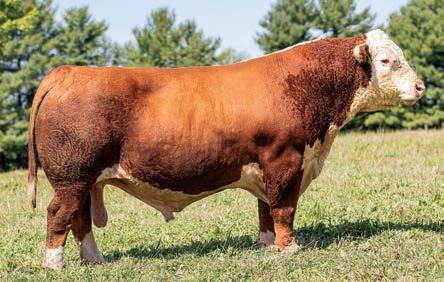
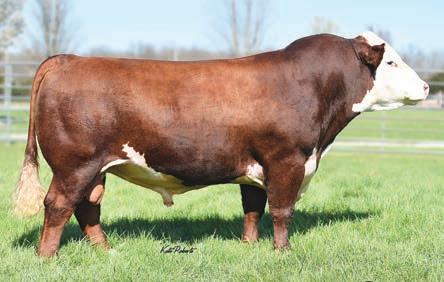
If your herd doesn’t have EFBeef genetics as an input… you are continuing to fall behind in tomorrow’s beef industry. We’ve been sowing the good crop of beef genes into the EFBeef Hereford bulls for generations to lock in a bountiful harvest of seed so your inputs can thrive in tomorrow’s U.S. beef cattle market.
Join us April 13, 2024 for the next opportunity to select from the EFBeef gene pool of max profit cattle. The numbers make it obvious EFBeef genetics lead the breed for the measured traits with value. We also take pride in our selection pressure on the non-measured traits too. Selecting cattle from the ground up with the appropriate female and male phenotype traits that are balanced for longevity of production.
EFBEEF BR VALIDATED B413 {CHB}{DLF,HYF,IEF,MSUDF,MDF}
BMI$ 539; BII$ 693; CHB$ 216

EFBEEF RESOLUTE CEO {CHB}{DLF,HYF,IEF,MSUDF}
BMI$ 447; BII$ 570; CHB$ 210
Phil and Joyce Ellis
26455 N. 2300th St. • Chrisman, IL 61924 765-665-3207
Matt and Lisa 217-712-0635
Joe and Lauri 765-366-5390
Chris Ellis 765-505-9691
Call us or visit for more information.
EFBEEF C609 RESOLUTE E158 ET {CHB}{DLF,HYF,IEF}


BMI$ 513; BII$ 644; CHB$ 195
EFBEEF B413 PRIMESTOCK E007 ET {CHB}{DLF,HYF,IEF,MSUDF}
BMI$ 438; BII$ 575; CHB$ 199
During 2023, EFBeef celebrates our 75th anniversary in our current location, offering polled Hereford bulls to commercial cattlemen. We are also proud of the fact that we are a 7th generation family outfit celebrating our 139th year of seedstock Hereford production. It all started in 1883 with the purchase of two registered cows and imported sire, Beekjay Hero.
The EFBeef program has never wavered from producing real world, functional cattle that are expected to excel in the commercial sector, returning net profit to their respective owners. You can expect your purchase at EFBeef to be backed by a guarantee that has stood the test of time, 140 years’ worth. You can expect your purchase to be genetically bred for the U.S. beef marketplace.
Elliott Dennis, University of Nebraska-Lincoln Extension livestock economist, provided the following guidance in a recent issue of In the Cattle Markets from the Livestock Marketing Information Center.
Productive life — Each cow has a useful or productive life — some are long, and some are short. The longer she lives, the more value she has. This productive life has a direct tie to the cull rates of the whole herd. While cull rates vary by year and age of cows, they may be used as a rough measure of average cow life. If a rancher has an average annual cull rate of 16%, on average, a cow lasts 6.25 years in that herd (100/16=6.25).
Cow productivity — Separate from the productive life of a cow, this figure is typically measured in terms of the weaning weight of calves. The size and number of calves weaned and sold per cow exposed to a bull will alter this value considerably. Heavier weaning weights imply more income generated per cow, allowing a bigger budget for replacement females in higher-income herds.
Cow costs — If weaning weights were all that mattered, we would raise extremely large cows. But large cows tend to cost more and have larger maintenance costs. What it (truly) costs to run a cow impacts the value. The higher the cost, the less one can afford to pay for replacements.
Salvage value — If the salvage or cull value is expected to increase over time, then what a producer can afford to pay per replacement female increases. In the past, these values have been fairly low, but these figures have increased over the past few years.
Calf prices — If cattle prices over the productivity life of the cow are expected to be high (or higher), on average, then the price cattlemen can pay for replacements increases. Understanding the cattle cycle dynamics is important here.
Interest rates — Higher feeder cattle interest rates imply more expensive borrowing costs, and thus the less one can pay for replacements. Over the past 15 years, interest rates have been declining, but in the last six months, they have jumped significantly — from about 5.5% to 8.2%. If you are not borrowing money, then you can pay a lot more for replacements.
inflation, cow inventories, weather events, etc. — all of which contribute to the value of a replacement cow,” Dennis explains. “Ultimately, these factors contribute to a single breakeven value (see Replacement Value Factors).”
Schulz believes calculating Net Present Value (NPV) offers the most accurate assessment of replacement value.
“Net Present Value is a means of taking into account that a time value of money exists and discounts future returns such that all results are in ‘today’s dollars,’” Schulz says. “Net present value is calculated by subtracting the initial investment from the sum of discounted cash flows. If the net present value is positive, meaning that the discounted futures earnings are greater than the initial investment, then the investment has a earned a rate of return greater than the discount rate and is acceptable to pursue.”
Further, Schulz points to an ISU decision aid (see Value Assessment Tools, Net Present Value of Beef Replacement Females) that determines NPV, as well as the maximum bid price. The latter calculates the initial investment value equating NPV to zero, given the required rate of return (discount rate) or opportunity cost of capital.
“The maximum bid price provides a benchmark to compare to current market prices,” Schulz explains. “If current market prices are below the calculated maximum bid price, then purchasing replacement females would likely be in order. If current market prices are above the calculated maximum bid price, purchases of replacement animals should likely be delayed.”
The decision aid also allows users to change input levels and conduct sensitivity analyses. For instance, looking at the impact of reducing annual cow cost by $50, increasing weaning weights by 25 pounds or getting another calf or two from the replacement.
Although it’s more of an annual decision for some producers, given what markets incentivize each year, Schulz also encourages producers to compare the cost of buying replacements versus developing their own (see Raising Versus Buying Heifers for Beef Cow Replacement).
“If you don’t know unit cost of production per calf, you don’t know whether the price offered is a good one, and you can’t know what can be paid for a replacement female,” Machen says.
Unit cost of production is calculated by dividing total annual cow maintenance cost by average weaning weight adjusted for weaning rate. Unlike breakeven cost, Machen explains this calculation does not include secondary income, such as revenue from open replacement females, market cows and salvage bulls.
Replenishing drought-culled herds always offers an opportunity to change the composition of the cow herd if change is warranted, Machen says. It could be a need to reduce mature cow size, increase adaptability, etc.
“Average weaning weights across the industry have not increased appreciably in decades; yet, mature cow size has increased steadily. It tells you the unit cost of production is increasing,” Machen explains.
Ask someone what it costs them to run a cow. Commonly, the answer boils down to variable expenses, which are really the proverbial tip of the iceberg.
“Supplemental nutrition, labor and depreciation are typically among the top five contributors to annual cow cost. Supplemental nutrition is influenced by weather and stocking rate, while labor is usually a fixed cost.
Depreciation (a non-cash cost) can be influenced by management actions/decisions,” Machen says. Keep in mind, he refers to depreciation calculated for accounting and management purposes rather than depreciation calculated for taxes.
More specifically, depreciation revolves around cow cost and salvage value. Machen explains annual per-head depreciation is determined by dividing the difference between cow cost and salvage value by the useful life of the cow.
Since depreciation is not a cash cost, Machen says many producers pay it too little attention. “Perhaps a more resonating approach is to quantify the impact of cow purchase price (and the concomitant depreciation) on weaned-calf unit cost of production,” he says.
Machen provides the example of buying a cow for $3,000. He estimated the cow’s salvage value after five years of use at $932 (1,159 pounds and $89.06 per hundredweight). That equates to $2,068 total depreciation for the cow: $414 per year. Bottom line, cow depreciation in a herd with an 84% weaning rate and an average weaning weight of 500 pounds means that depreciation adds $20 per hundredweight to weaned-calf unit cost of production for the cow’s first five calves.
The four variables above represent the opportunities to lower the contribution of depreciation to weaned calf unit cost of production in Machen’s scenario: reduce replacement cost, increase salvage value, increase average weaning weight or increase the percentage of calf crop weaned.
As well, Machen points out cow longevity has an obvious impact on depreciation.
“Cows that remain productive beyond their removal from the depreciation schedule turn the depreciation expense into a ‘depreciation credit,’” Machen explains. “Productive cows remaining in the herd after weaning a fifth calf (in his example) do not incur depreciation expense and therefore wean calves with a lower unit cost of production. Likewise, long-productive cows reduce the number of heifers kept for replacement or the number of cows purchased in a high-priced market.”
Gathering and accounting for factors to assess replacement female value is neither quick, nor easy. That’s why automated decision aids developed by Land Grant universities can be so useful. A few are listed below.

University of Nebraska Lincoln (UNL)
2023 Heifer Replacement Values
Kansas State University (K-State)
“The primary difference between these tools is the assumptions/data used in the calculations and how flexible one wants to be in modifying the assumptions,” according to Elliott Dennis, Extension livestock economist at the University of Nebraska-Lincoln (UNL). “The UNL estimates are based on the Food and Agricultural Policy Research Institute at the University of Missouri projections for cattle value, as well as on the cost of production and related data from UNL’s Gudmundsen Sandhills Laboratory ... Alternative scenarios are provided but one cannot adjust the models’ underlying assumptions. K-State estimates are largely based on USDAERS 10-year projections, they are static (produce one value rather than a distribution of values) and the user can modify most assumptions.”
Iowa State University (ISU)
Replacement
Iowa State University (ISU)
“A word of caution,” Dennis says. “Most tools use a representative operation that does not reflect an individual producer but rather an average over many producers. There is no expectation that the cost and production assumptions reflect exactly a particular producer. Forecasts, such as the tools mentioned, are intended to help individuals create a reference point for individual situations and expectations of future events. Producers can use these, other information and their own ideas to arrive at what a reasonable value might be for a heifer/cow purchased or retained for replacement.”

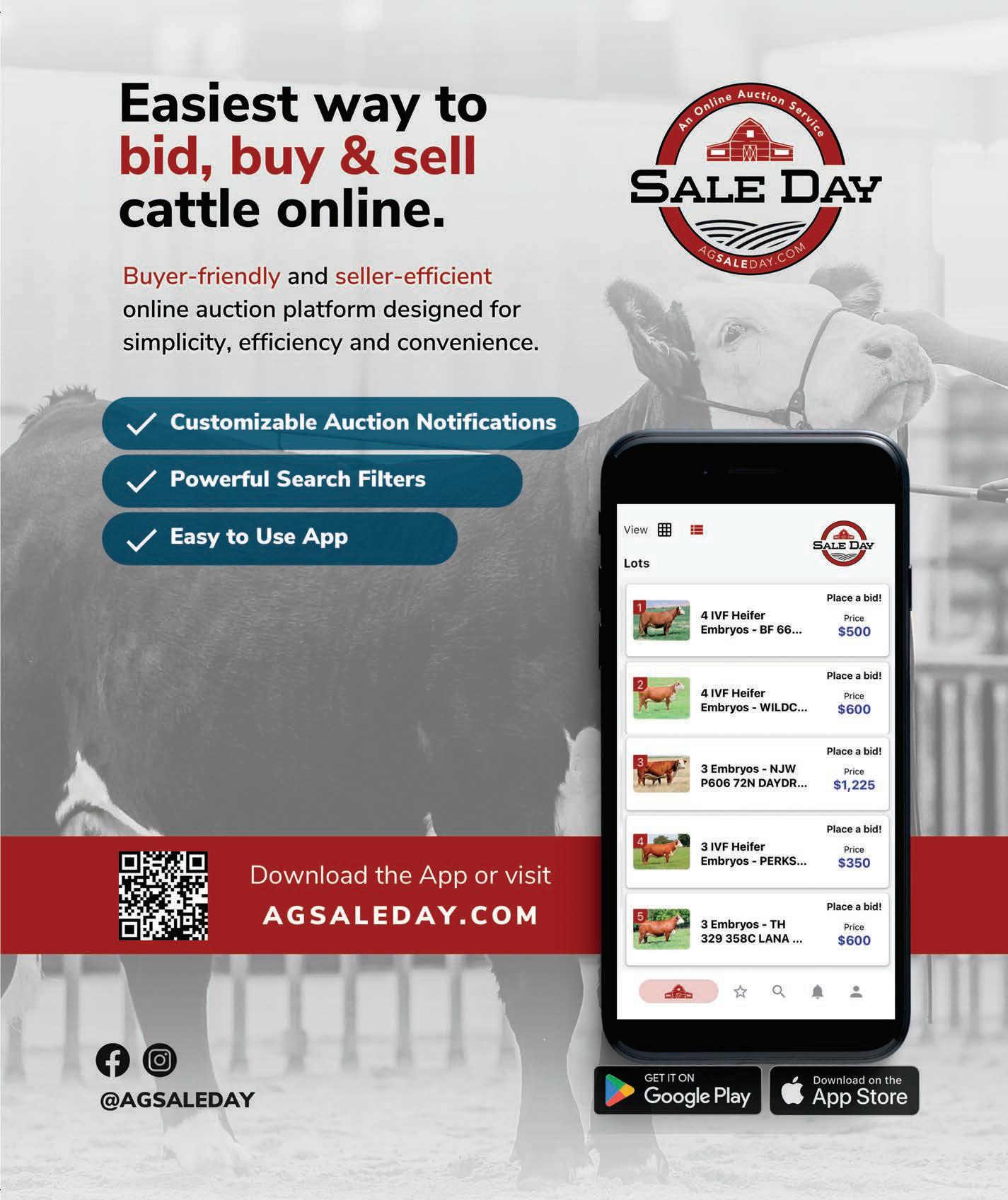

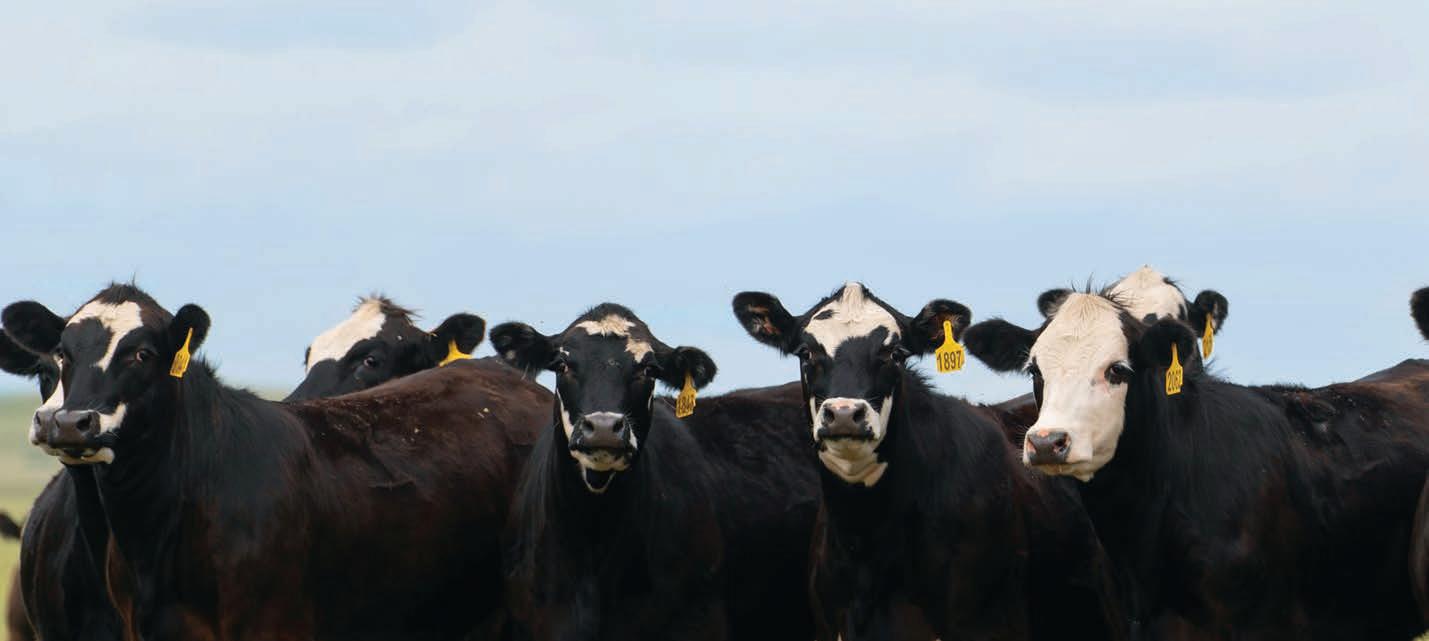 by Katie Maupin Miller
by Katie Maupin Miller
Hybrid vigor has long lined cattlemen’s pockets with added profit potential. But, in eastern Montana Circle B emphasizes vigor. Circle B is a commercial cattle operation owned by the Borman family and run by just over a dozen cowboys and their families. The Bormans breed their 1,600 straightbred Angus cows to Hereford bulls, and the added hardiness of the resulting F1 calves pays off in spades.
“Six or seven years ago, we calved 550 replacements. We had 68 calves in a 24-hour period when it was 40 degrees below zero, and even in this extreme weather the calves had enough vigor to get up and nurse quickly,” recalls Circle B’s manager, Brent Morrison.
A once self-proclaimed “Angus man” who has cowboyed and managed ranches since he was 20, Morrison was unsure about the bald-faced bulls when he joined the operation 13 years ago. That was until he noted firsthand the added efficiency, fertility, longevity, docility and sustainability synonymous with the Hereford breed. Today, he touts the many advantages of not only Circle B’s red-and-white bull battery but also the premium-grabbing F1 offspring that continue to make new marketing opportunities for the ranch.
Circle B was founded by the father-son duo Frank and Fred Borman in 1998. Patriarch Frank Borman is known as an astute businessman not afraid to shoot for the moon — literally. Borman commanded Apollo 8, the
first mission to fly around the moon. And when it comes to Circle B, the Borman family is equally as pioneering and progressive. For more than two decades, Circle B has served as a textbook example of a profitable cowcalf operation, mixing management, good ol’ fashioned stockmanship, benchmarking metrics and complementary genetics. Fred’s wife, Donna, was the one in the family first taken with the latter. She read about the power of crossbreeding in “Storey’s Guide to Raise Beef Cattle” when the family first began their foray into Big Sky Country. Today, Circle B’s F1 cattle reflect the family’s commitment to artfully melding progressive ideas with proven tactics and business savvy with industry tradition. And the operation’s use of Hereford genetics pays off in the bull pen, at feeder calf sales, for their repeat buyers and in their budding replacement female market.
To see the many advantages of Circle B’s use of Hereford genetics, it makes sense to start in the bull pen. For more than 20 years, Feddes Herefords, Manhattan, Mont., has served as Circle B’s bull supplier. Marvin Feddes and his sons, Tim and Dan, know Circle B’s operation, its cow herd and its goals. Each year, the Feddes family cuts out well-suited herd sire prospects for Circle B before Morrison makes his final selection.
Borman and Morrison like Circle B’s sires to be sound, rugged, moderate, thick, deep, easy-fleshing and wellsuited for the ups and downs of Montana’s weather.
“Dan and Tim really focused on the traits we want, which are structure, capacity and the terminal aspect, too. They really just cater to us,” Morrison says.
The long-standing working relationship between Circle B and Feddes Herefords cannot be understated. Morrison notes that the Feddes family knows their cow herd, as well as any cowboy knows their string of ranch horses, with the brothers easily being able to recall the generations of performance and pedigrees behind each bull prospect.
“If you talk to Dan and Tim, they just know everything about every cow and every bull, and they really have pushed hard on what we want our cows to be,” Morrison says. “We don’t want to be feeding 20 pounds of hay in the winter if we’re feeding hay and a couple pounds of cake. We want that feed efficiency there. And the bulls are the same way, too. Our bulls in the winter get about 30 pounds of feed, and they hold their condition.”
Morrison also appreciates the ranch-ready nature of the Feddes Hereford bulls. Calved in Montana themselves, the bulls’ calves hold up better during the sometimes extreme and unforgiving calving season. Their calves come easy, at predictable weights and are up nursing so quickly that it sometimes startles first-calf heifers, Morrison laughs. But it’s not just the Hereford-influenced offspring that are well suited for the West. These bald-faced bulls hold up better than their black-hided peers, according to Morrison.
“They seem to do a lot better job of taking care of themselves, and they stand up a lot better. They don’t get lame,” he says.
The Hereford bulls’ heavy, rugged structure keeps them sound and comfortable even in the sometimes tricky terrain. On average, sires spend at least five breeding seasons at Circle B, which averages a 95-98% conception rate. As Morrison notes, thanks to their rugged structure,
added fertility and gentle dispositions, Hereford bulls are rarely culled for broken legs or broken “pieces.” In fact, over the last 13 years, he has only seen one Hereford bull break a leg. From his previous experience with Angus bulls, Morrison expected two a year.
While cowboys inherently run the risk of injuries, Morrison says his crew suffer far fewer injuries due to the disposition of the Hereford and Hereford-influenced cattle. Even green cowboys can successfully gather Hereford bulls, and their disposition is passed along to their calves.
An easy-going nature isn’t all the bald face offers. The Hereford influence also adds longevity, soundness and efficiency to Circle B’s F1 calves. The black baldy calf crop separates itself from neighboring straightbred, blackhided herds, with the calves being more vigorous and faster growing. Their added docility shines at branding time when the baldy calves are easily handled and sorted, but their good temperament really pays at weaning.


“I think it comes down to docility, and it comes down to feed conversion gain. They’re not stressed out, so they’re gaining better, they’re getting less sickness. We’re pulling less and less every year. The cowboys are actually getting bored because you might go 15-20 days and only pull one or two where we used to pull 70-80 a day, and we had a lot of cattle,” Morrison says.
When the baldies are weaned, they’re taken to the Circle B feedlot in Hysham, Mont., to be wintered and backgrounded. Since all Circle B cattle winter on the Hysham portion of the operation, the black-white-face calves are easily compared to the black-hided, straightbred commercial Angus replacements, and the inherent advantages of the baldy cattle are front and center.
“Those black calves come in; it usually takes them an extra day or two days to really come around to feed. Whereas a Hereford calf, pretty much the day you put it in there, that little bugger will go and start eating something,” Morrison says. “The Hereford calves are just gaining better on our lot.”
Perhaps even more impressive than the Circle B calves’ quality is their consistency. Their Feddes sires and commercial Angus dams stamp out incredibly uniform calves. When riding pastures, Morrison notes the baldy calves are just cookie-cutter.
continued on page 14...
“We usually get 70% of our cows bred in the first cycle or more. So, the baldy calves are just uniform, and the little ones are just as fancy. They’re just a couple of weeks later,” he says.
In addition to the baldy calves being uniform, fastgrowing, efficient, healthy and manageable, the feeder cattle are also backed by Circle B’s progressive management. Circle B calves are enrolled in the following value-added programs: Non-Hormone Treated Cattle (NHTC), Where Food Comes From CARE Certified, Superior Verified, VAC 60, Superior Progressive Genetics, Beef Quality Assurance (BQA), IMI Global Certified and Hereford Advantage.
The Hereford Advantage program is an IMI Global verification of Hereford-sired feeder calves with superior genetics, health and management, which is supported by the American Hereford Association (AHA) staff. Hereford-sired calves eligible for the program are source and age verified, sired by bulls ranking in the top 50% of the Hereford breed for the Certified Hereford Beef® Index (CHB$) index, have received at least two rounds of vaccinations and are raised by BQA-certified producers. The CHB$ index measures which Hereford sires have the most potential to produce the most profitable offspring when bred to commercial Angus cows for terminal offspring. The index places emphasis on feedlot performance, efficiency and end-product merit. By using Hereford sires with the genetics needed to qualify for the Hereford Advantage program, Circle B has seen improvements in its feeder cattle. But the AHA staff support that accompanies the program has proved just as valuable.
“Trey Befort (AHA director of commercial programs) has done a great job for us, and he is there repping every Superior sale we’re at and talking to people,” Morrison says. He believes the more AHA promotes its programs, the more it helps him as a producer.
The Circle B F1 feeder calves sell in the Superior Livestock Bellringer sale at the beginning of the year; there is no shortage of interest. You could say their lots really do ring buyers’ bells. Year after year, their calves fetch premium prices. During last year’s sale, Circle B’s black baldy NHTC calves brought more than a lot of comparable weight GAP4certified black steers from a reputable brand.
“Those steers went out the door for $1,760 a head. I’ve never seen anything like that in my life,” Morrison says.
Although the calves fetch a premium, the number of repeat buyers underscore their value. Hagemann Farms, Five Rivers,
Beller Feedlot, and Adams Land and Cattle Company have repeatedly purchased feeder cattle from Circle B, and their continued interest serves as a great testimony.
While not all buyers offer Circle B carcass data, the figures that do roll into eastern Montana are impressive.
Adam’s Land and Cattle purchased more than 400 steers and reported that the lot gained 4 pounds per day with just over 91% grading USDA Prime and Choice. These baldfaced cattle making the grade further prove the merit of the F1 cross’ profitability from gate to plate.

Borman, Morrison and crew have worked for more than a decade to perfect the Circle B cow herd. Selecting moderate, deep, wide, easy-doing, fertile cows with excellent mothering ability.
These traits are apparent in the 800 head of bred baldy heifers on summer grass at the ranch’s Miles City, Mont., location. This year, for the first time, Circle B retained all of their F1 black baldy females to market as bred heifers rather than sell them as feeders. Their dams are the most elite of the Circle B program.
Like all of the Herefordinfluenced calves, these heifers have shown that their disposition is well suited for the commercial cattlemen — easy to ride through and move from pasture to pasture yet not so tame that they’re hard to push. They’re truly cattle made by cowboys for cowboys; cows that will get the job done with the resources at hand. Morrison knows because Circle B retained 30 head of frostbitten baldy heifers several years ago. Even among the well-sourced commercial Angus cows, the baldies stand out — and not just for their white faces.
“The only reason they got to stay here is that they had short ears and short tails, so we kept them, and they are actually outperforming our black cows,” Morrison says. “They’re a lot thicker. They take a lot less feed than the black cows, and they just hold their condition and have a lot of milk.”
Morrison notes their bred heifers are designed to be top-notch mama cows.
“I think they’re a cow that you can take home, and they’re going to go out and work for you. You’re not going to work for them. And I’ll just almost guaranteed they’re going to be good mothers and have good thick calves,” Morrison says.
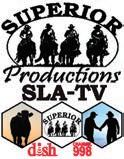

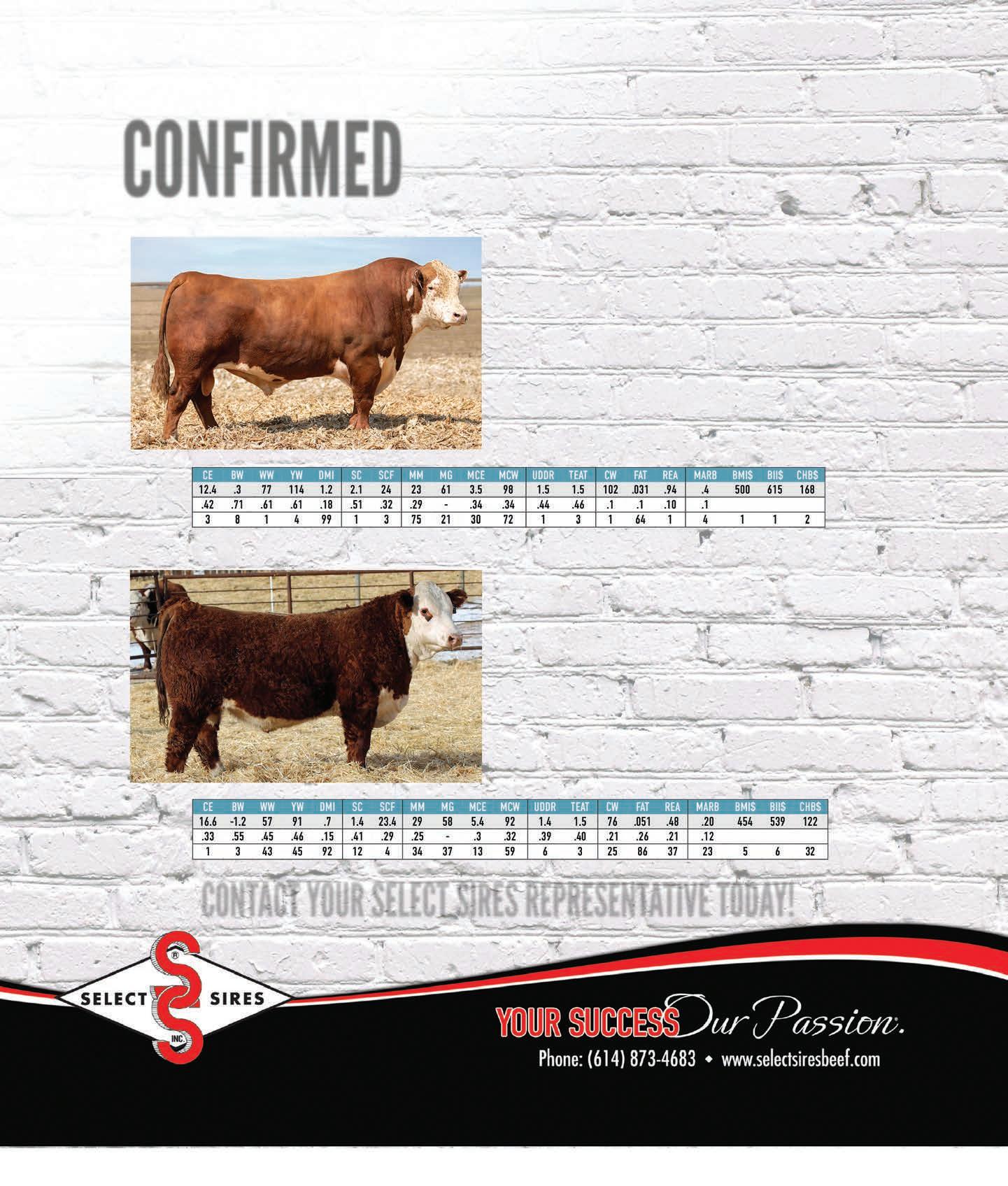


At the Ranch • September 14, 2023
14 POWEFUL BRED HEIFERS
Bred to HH Advance 0270H, the high selling bull from our 2022 Sale 25 YOUNG BRED COWS
March and early April calvers with several donor prospects included 6 PROVEN DONORS • 20 OPEN FALL YEARLING HEIFERS


HH MISS ADVANCE 8099F ET {DLF,HYF,IEF}
Sire: HH ADVANCE 6007D ET
CE 0.5; BW 3.4; WW 50; YW 79; DMI 0.1; SC 1.0; SCF 18.2; MM 24; M&G 49; MCE 1.6; MCW 54; UDDR 1.40; TEAT 1.40; CW 63; FAT 0.021; REA 0.15; MARB 0.13;
BMI$ 363; BII$ 434; CHB$ 106
R ole model brood cow that has been a donor in our program for the last 3 years. Perfect uddered, big middled, thick topped and goes back to the great 5139R donor. SHE SELLS!
Sale offering is 100% parent verified and has GE-EPDs.

Videos will be viewable in late August at www.holdenherefords.com, and the livestocklink.com
Sale cattle will be viewable at the ranch anytime this summer and on display sale week.
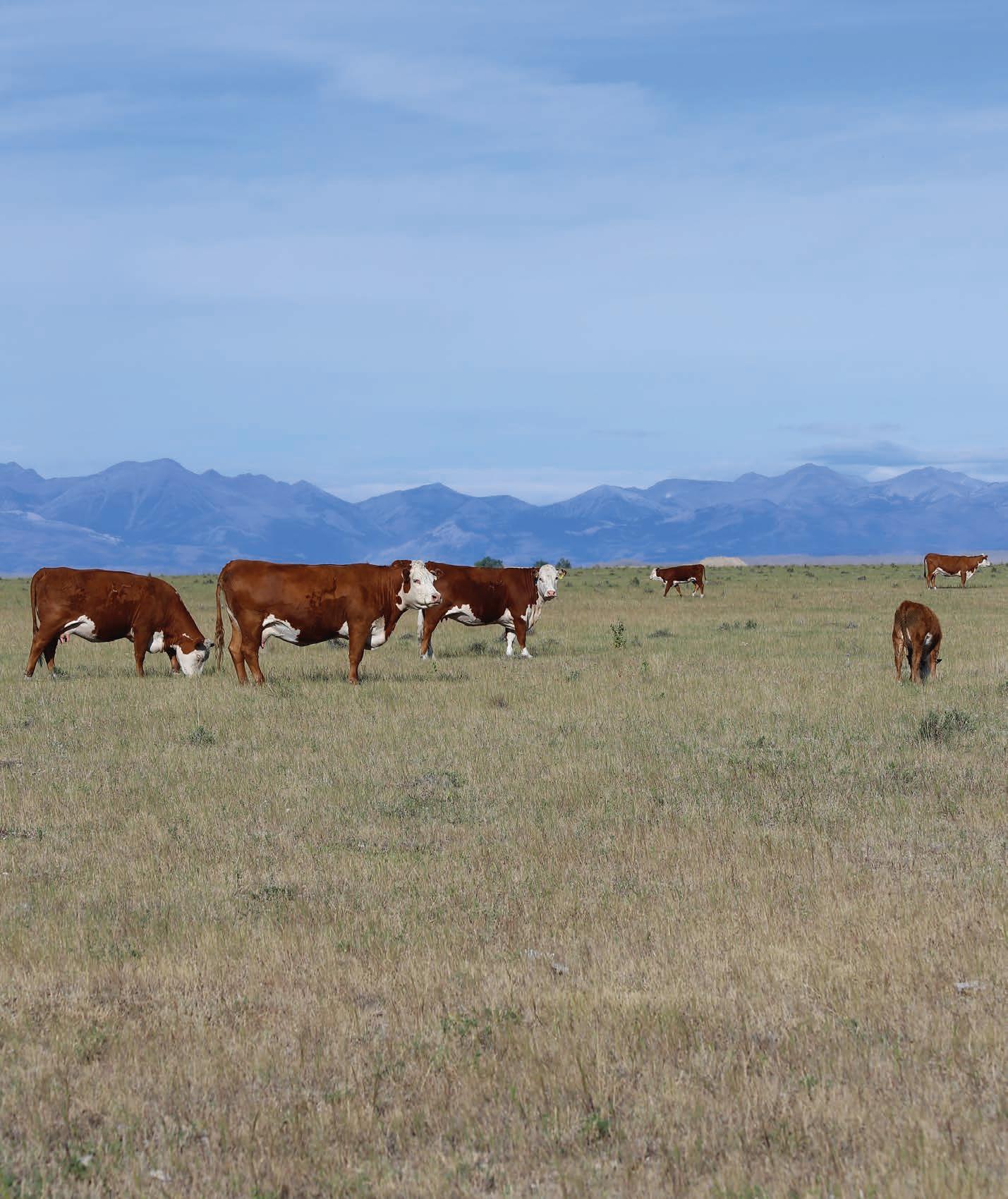
F ollow us on Facebook for more updates @holdenherefords or check out www.holdenherefords.com

Watch for more details in the September issue of the Hereford World .
Catalogs sent on request. Call or text 406-450-1029 or send us an email.
HH MISS ADVANCE 8339F {DLF,HYF,IEF,MSUDF}
Sire: HH ADVANCE 3297A ET
CE 2.2; BW 3.1; WW 59; YW 103; DMI 0.6; SC 0.9; SCF 16.4; MM 32; M&G 61; MCE 2.2; MCW 88; UDDR 1.30; TEAT 1.40; CW 84; FAT 0.031; REA 0.62; MARB 0.23; BMI$ 370; BII$ 452; CHB$ 142
E xceptional EPDs, pigment, udder quality, and phenotype. 8339F has been in our donor program since she was a 3-year-old. Here is a donor with huge potential to go in any direction. SHE SELLS!
Make
••••
13TH
3139 Valier Dupuyer Rd. • Valier, MT 59486 • 406-279-3301
Home 406-450-1029 Jack’s cell • 406-450-0129 Jay D. Evans 406-600-3118 Eric Lawver • 406-590-3307 Brad Holden jtholden@3rivers.net • www.holdenherefords.com
Identify your values and goals.
In the July Hereford World issue, we talked a bit about the importance of livestock breeders and enthusiasts working to “take back” the word “climate” to be sure our voices (and the positive work we are already doing) are reflected in the global conversation around this topic. While many cattle breeders that read the Baldy Advantage and Hereford World may feel disconnected to this topic because of disinterest, distrust or simply feeling it isn’t applicable, the fact is we cannot ignore it. Whether you have a small show cattle operation or a large
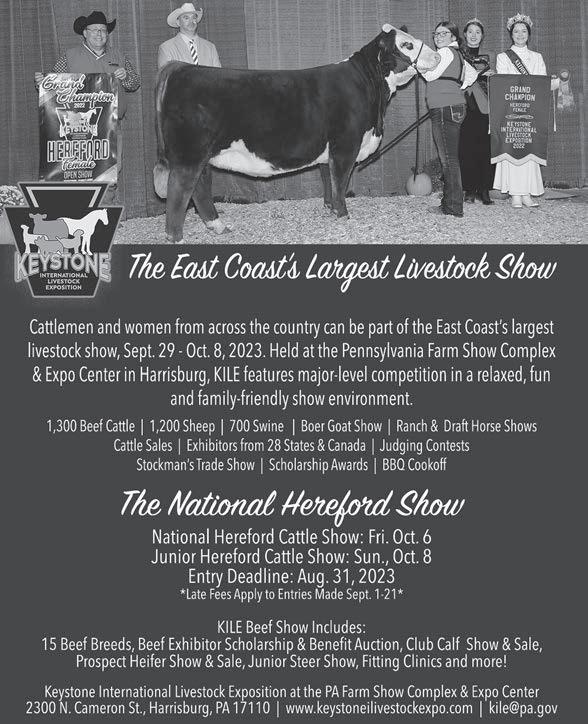
cow-calf enterprise, our work in sustainability is noticed by the public. So, if we do want to ensure that at least our neighbors and customers know how we’re achieving sustainable aims, start with these five tips:
Five Ways to Step into Sustainability
• No. 1: It’s about YOUR values
• No. 2: It’s about YOUR goals
• No. 3: It’s about YOUR bandwidth
• No. 4: It’s about YOUR long-game strategy
• No. 5: It’s about YOUR sphere of influence
In the interest of column space, we’re going to cover the first two of these, and we’ll pick up in September with the conclusion of the three-part series.
It’s about your values
As an agricultural consultant and writer, I’m constantly pivoting to work on the current topics in the industry, which is how I got into the “climate conversation.” I can assure you that I didn’t wake up one day and decide to tackle this topic. Rather, I noticed how one-sided conversations around climate were and how agriculture and the livestock industry was sometimes left out or “assumed” into a position.
The work you do in sustainability and climate isn’t in opposition to your values. It should quite simply support them. The climate conversation is wide open with a variety of viewpoints — some you likely agree with strongly, some you may find ridiculous and others you may not be sure how you feel. Your plans in sustainability should be like any other plan — one that supports your beliefs and core values.
Like him or dislike him, Blackrock CEO, Larry Fink, is famous for his positions on business and climate. One he’s commonly credited with sharing: being involved in climate is going to be good for business. While not endorsing his opinions, there is a nugget of truth.
Any work your farm or ranch does to step into sustainability must absolutely align with your goals and cannot be in opposition to them.
Sustainability is often just a matter of improving a practice, saving energy and reducing waste. That’s why once you decide to step into sustainability, you realize that you can make this topic work for you rather than just attempting to “do sustainability” in a way that isn’t connected to your core.
That’s enough for this month; but consider looking around your operation to see where you are already stepping into sustainability and decide, which stakeholder — be it customers, industry or neighbors — need to know the good work you already do.
Any work your farm or ranch does to step into sustainability must absolutely align with your goals and cannot be in opposition to them.











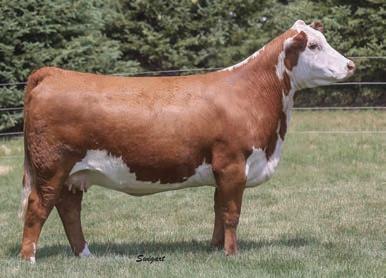
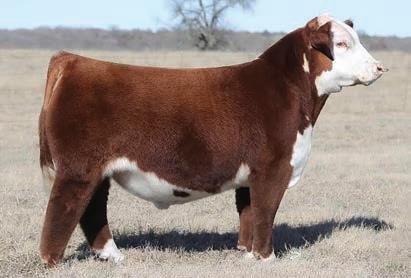




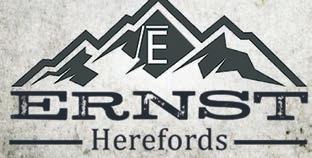



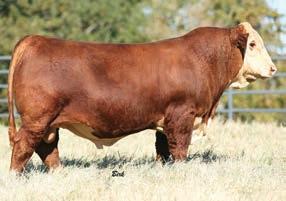

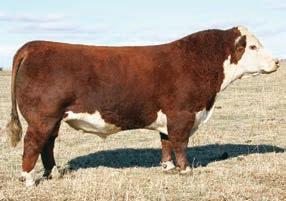
Welcome moisture across much of the United States since last winter finally began pushing aside the widespread, multi-year drought for some producers. By June, 41% of the nation’s cattle were in areas impacted by drought, compared to 50% a year earlier.
“We’ve turned the corner, we’re getting some moisture, people have a reason to be optimistic, but it takes a long time to turn the ship,” Dale Blasi, Kansas State University beef cattle nutrition and management specialist, explained toward the end of June. Western Kansas endured drought as long as anyone in the nation, but the Sunflower state finally received muchneeded moisture. At the same time, neighboring Missouri illustrated deepening drought experienced by others.
However, drought conditions in many of the hardest-hit portions of cow country should improve with the recent arrival of El Niño.
“El Niño has returned for the first time since 2018-2019. However, the warm ocean waters have not yet begun to strongly exert an influence on the atmosphere above,” explained Brad Rippey, USDA meteorologist in June. “Such a connection will likely not occur for a few more months, until late summer or autumn.
Until then, we’re at the mercy of other atmospheric whims, such as the blocking highpressure system that parked itself over the central U.S.,
leading to record-shattering heat in Texas and drought in the Midwest.”
El Niño 101
El Niño-Southern Oscillation (ENSO) is a periodic and recurring climate pattern involving changes in sea surface temperatures in the central and eastern tropical Pacific Ocean. In June, National Oceanic and Atmospheric Association (NOAA) scientists expected at least a 56% chance of the current El Niño becoming a strong event; 84% chance of at least a moderate event.
Typically, El Niño brings above average moisture to the southern and southeastern portions of the United States. The opposite is expected during periods of La Niña conditions. The most recent La Niña impacting the U.S. ended in March.
“In general, El Niño-related temperature and precipitation impacts across the United States occur during the cold half of the year (October through March),” according to United States El Niño Impacts from the NOAA. “The most reliable of these signals (the one that has been observed most frequently) is wetterthan-average conditions along the Gulf Coast from Texas to Florida during this 6-month period. This relationship has occurred during more than 80% of the El Niño events in the past 100 years.”
Strong El Niños can also increase moisture in the Southwest and California.
“Eventually, atmospheric disruptions associated with El Niño will begin to take over U.S. weather patterns. When that happens — almost certainly later this year — there will be an increasing likelihood of ENSO-related precipitation enhancement across the southern tier of the U.S., including the southern Great Plains,” Rippey said.
Conversely, El Niño typically brings more dryness and warmer winters to other parts of the U.S.
“Later in the year, when El Niño rules the roost, there are indications that drought will be a concern in parts of the northern U.S.,” Rippey explained. “Current precipitation forecasts from the National Weather Service suggest that autumn 2023 drought concerns will be greatest in the Northwest, with dryness possibly expanding eastward into the Great Lakes region by late winter and early spring of 2024.”
In the meantime, NOAA’s Climate Prediction Center forecasts widespread temperature increases for the majority of the nation throughout the summer.
When major beef cow states heal from drought, national herd expansion will have a chance to begin. Those states include the five with the most beef cows: Texas, Oklahoma, Missouri, Nebraska and Kansas.
There were 28.9 million beef cows in the United States when this year began, according to the USDA Cattle report. That was fewer than the same time a year earlier, representing the smallest U.S. beef cow herd in decades. Much of the ongoing herd liquidation is driven by drought.
NOAA’s Climate Prediction Center forecasts improving moisture conditions with drought lessening in parts of the U.S. — ending in parts of the High Plains — as the nation moves toward the cold season.
“I would say over the last month we have seen a reduction in the severity of drought,” Blasi said of Kansas. “I just spoke with a producer this morning, and he said their grass conditions were good and they had some rain in their ponds. I spoke with this same producer six weeks ago, and he was selling females.”
Blasi explained prolonged drought meant producers were paying record high prices for hay — about $180 per ton for round bales of prairie hay and as much as $300 per ton in western Kansas for grinding alfalfa.
“I would expect that as El Niño-related precipitation patterns become fully established during the 202324 cold season, percentages of both hay and cattle in drought should decrease nationally on the strength of significant precipitation in key production areas, such as the southern Great Plains,” Rippey said.

WHEN: FRIDAY, SEPTEMBER 15, 2023
WHERE: AT THE FARM, NEWBURGH, ON
WHAT: DONORS, CHOICE LOT PAIRS, BRED HEIFERS, BULL AND HEIFER CALVES
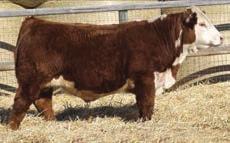

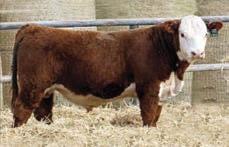
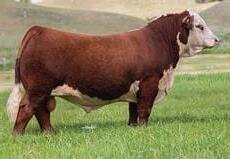
ELWYN, DONALD AND PAULINE EMBURY
Newburgh, ON Main Office: 613-378-6632
Donald Cell: 613-328-9065 Cattle Office: 613-378-2701 rivervalleyherefords.com

SALE MANAGED BY: T Bar C Cattle Co. Ltd.
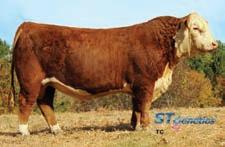

Chris: 519-374-3335
Ben: 519-374-3335
Shane: 403-363-9973
View the catalogue online at BuyAgro.com


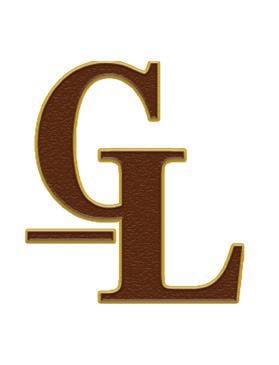
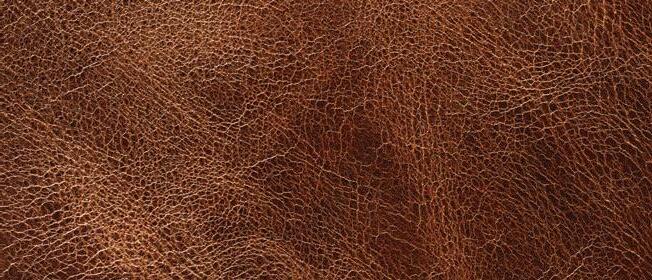


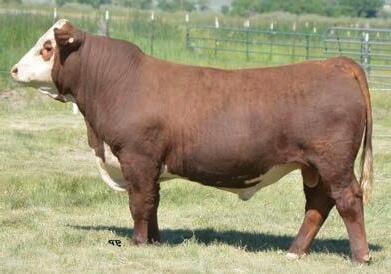

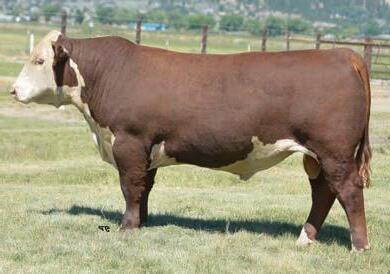



No matter how stubborn the beads on your own abacus, cattle prices continue to run higher and faster than many anticipated. Given what appears to be ongoing beef cow herd liquidation and the dearth of replacement heifers, this is only a prelude of markets to come.
“We’re 18 to 24 months from the price highs,” says Lance Zimmerman, senior protein analyst at RaboBank. “The expansion timeline is currently similar to 2012. We haven’t begun to retain heifers. We still have our foot firmly on the gas pedal of beef cow slaughter.”
Likewise, Dave Weaber, protein analyst for Terrain believes the peak in the current price cycle comes in 2025-26, a year later than he anticipated originally.
“We expect further tightening of feeder cattle and calf supplies during the second half of 2023. Improving moisture conditions across much of the Central Plains and West combined with now-record fed cattle prices have feedyards chasing replacement cattle and driving prices markedly higher,” Weaber explains.
In June, Weaber and Terrain forecasted the 2023 price range for feeder steers (700-900 pounds, Central Plains and West) at $235-$270 per hundredweight (cwt.) Price

projections for fall-delivery steer calves (500-600 pounds) were $275-$300, depending on quality.
By way of comparison, USDA’s Economic Research Service (ERS) pegged the third-quarter feeder steer price (750-800 pounds, Oklahoma City) at $224 per cwt. in the June Livestock, Dairy and Poultry Outlook. ERS forecast the fourth-quarter price at $226 for a 2023 average price of $210.62. Next year’s annual average price was projected to be $226.50.
On the other end of the scale, ERS projected the fed steer price (five-area direct) to be $173 in the third quarter and $174 in the fourth quarter for an annual average of $171.73. Next year’s annual average price was forecast to be $180.
Weaber explains cash fed cattle prices (five-area direct) were record high in the second quarter this year, exceeding prices at the peak of the last cycle. He points out part of the strength in fed cattle prices came from a couple of novel factors.
One was the new sow housing and handling requirements (Prop 12) that became law in California on July 1. Weaber explains the new regulations mean there is a significant shortfall of ‘compliant’ pork to serve the state’s consumers. Retail grocers and food service outlets scrambled to fill the void with beef and poultry.
“We expect wholesale beef and fed cattle prices to overperform our previous expectations as California meat demand transitions and must compete with the rest of the market for beef supplies amid an already tightening supply situation,” Weaber says.
At the same time Weaber points to growing demand for beef fat to use in producing renewable biodiesel. “If renewable diesel demand for fat continues, cattle will have more value, and we will have another product to sell at or above the cost of gain,” Weaber says.
Katelyn McCullock, Livestock Marketing Information Center director and senior economist, expects cattle prices to approach where they were during the previous cyclical
summit in 2014. She notes peak prices last time only lasted for about a quarter; high prices for about two years.
“I wouldn’t be surprised to see a pattern similar to last time, and it could be longer this time because of the number of heifers in the feedlot,” McCullock says.
At the same time, McCullock explains, “We will continue to be concerned about demand destruction. Everything is so much more expensive today. You have to wonder when consumers will show more price fatigue.”
Given the likely extended horizon for herd rebuilding, Weaber believes expansion could occur at a more manageable pace than the last time, without the steep short-lived price spike followed by a hard fall. Instead, prices could remain elevated for longer.
“This kind of price activity is expected to further drive expansion plans at many cow-calf operations and create even tighter feeder cattle and calf supplies,” according to Weaber. “We expect feeder cattle and calf supplies outside of feedyards to be down 5% to 7% during the second half of 2023. The reduction is a function of 4% fewer beef cows calving and 5% fewer beef replacement heifers expected to calve in 2023 combined with accelerating beef replacement heifer calf retention at the ranch level.”
Even so, key factors in the current market are starkly different than conditions in the 2014-15 time period that so many want to equate to currently reality.
McCullock explains the U.S. economy was emerging from a soft, shallow recession (2011). The domestic economy was expanding as herd rebuilding began, interest rates remained historically low and there was little inflationary impact. The opposite is true for all of those today.
Start with interest rates. The prime rate was 3.25% in the heart of 2014 when expansion began last time, according to Zimmerman. Today, it is 8.25%. In broad terms, he says the 5% increase in interest rates equates to about $500-$550 more interest rate expense in a bred heifer purchased today than about a decade ago (see Replacements — How High is Too High?).
“We need to ask ourselves how a higher interest rate affects not only expansion but how it affects the attitude toward taking risk, be it retaining cattle through the feedlot or building and remodeling facilities,” Zimmerman says.
Speaking of which, some producers are nearing retirement; others of a certain age could view the high-price environment as an historical opportunity to exit the business.
Thinking about cattle businesses ceasing or changing generational hands, Zimmerman says, “It’s also the transfer of knowledge and networks.” He encourages younger producers to consider intentionally seeking out those who have been successful over a lifetime and seeking their knowledge.
Weaber expects the industry to rebuild beef production during the coming expansion phase, but likely with fewer cows. That’s possible due to the average annual growth in carcass weights that has occurred for decades and shows no signs of slowing. Markets continue to incentivize heavier carcasses, while technology and management prowess provide the means.
However, while still too early to know, Zimmerman says consumer beef demand the past couple of years, and so far in 2023, sets the stage to begin considering if an overall demand shift is occurring. In other words, could the efforts by producers and the collective industry across decades have pushed the demand curve forward in such a way that some of the old rules no longer apply or apply differently? For instance, as McCullock mentioned above, many economists continue to expect consumers to trade down within their beef purchases or substitute more lower-priced competing proteins. That has occurred historically, but not this time, so far.
“If demand has truly shifted, are we at a time where we can support more beef operations?” Zimmerman wonders.
“Everyone wants to know when the peak prices will come. It’s more important, to me, to know when prices will stop increasing,” McCullock says.
Part of that has do with higher input costs today and likely narrower margins compared to a decade ago. Plus, McCullock notes, “The last five years have shown us there are a lot of shocks we can’t anticipate.”
“We are operating in an environment that is increasingly more volatile than ever before, from moonshot rallies to drought,” Zimmerman says. “We have to be more agile. We need a business plan, but we also need to invest in things that give us the opportunity to pivot. If we overcommit to a single plan it could sink us.”
Likewise, McCullock encourages producers to identify ways of increasing operational flexibility, be it figuring out ways to cut hay cost or increase marketing options.
“You need to be a low-cost producer all of the time. Once those pennies get away, they don’t come back,” Weaber says.
Everyone wants to know when the peak prices will come. It’s more important, to me, to know when prices will stop increasing.
— Katelyn McCullock, Livestock Marketing Information Center
Your herd is covered.
On the ranch, you make decisions using visual appraisal every day. But what about the traits you don’t see? That’s where NEOGEN’s® GGP comes into play. We’ve loaded the most informative markers and filled in the gaps to provide you with the most complete and powerful seedstock selection tool in the industry.
So, you can be sure those lines in the tag are working overtime for you to provide confidence in selection decisions that help bolster your reputation amongst your herd and customers for generations to come.

GGP’s markers have you covered and informed. Leverage GGP today by contacting your breed association or go to genomics.neogen.com/en/ggp-beef

FRIDAY, SEPTEMBER 15TH
Our Biggest Sale Ever! 120 Churchill Ladies Sell!
All of our 2017 and 2018 born cows sell unless they are jointly owned donors! 50 of our best bred heifers sell!
20 elite ET heifer calves sell! • 50 embryos sell!
Bred Females were bred AI to these fantastic bulls: Churchill W4 Sherman • Birdwell New Standard CL 1 Domino 267K
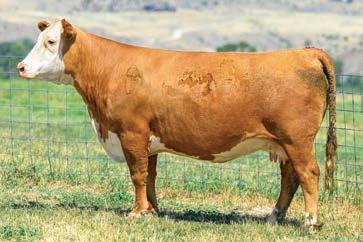




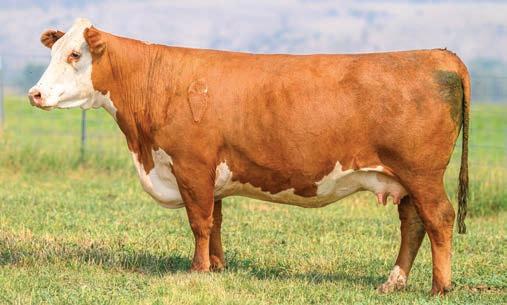
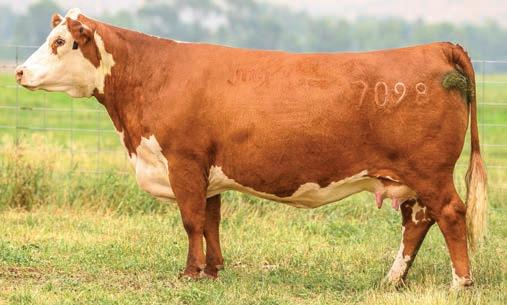
We pay half the delivery cost anywhere!

Offer load lots of Hereford and Hereford-sired baldy calves and feeder cattle to buyers, and they sell for as much or more than any same-class cattle in the market. A growing number of Hereford-influenced calf sales underscore the fact.
So far in 2023, more than 8,000 head have sold through six sales in six states.
“When you look at the growing numbers of cattle marketed through these sales and the price averages relative to the overall market, there’s no question more buyers are finding value in these Hereford and Hereford-influenced calves and feeder cattle,” says Trey Befort, American Hereford Association (AHA) director of commercial programs.
Some of these sales are organized and managed by individual auction markets in areas where Hereford use is prevalent and supported by Hereford breeders.
“The reason we’re doing this Herford-influenced sale is because we’ve had some exceptional sets of Herefords come through our barn. When they come through, they’re bell ringers and can really go right up there with the best of the blacks,” explains Jarrid Herrmann, owner and manager of Cherokee Sales Co. (CSC), Cherokee, Okla. “We said, ‘Let’s offer something that you can kind of see is becoming a thing of the future.’ I feel like I need to
get in on this thing, and it’s providing an opportunity to not only market great Hereford cattle, but also be a part of something bigger.”
CSC hosted its first Hereford-influenced sale this year. However, Herrmann also now owns Mitchell Livestock Auction in South Dakota where Hereford-influenced calf and feeder cattle sales have been a successful staple for years. Hereford breeders organized the first Mitchell sale and continue to drive its development.
around my area buy good bulls. They know good cattle, and it proves when you lay your eyes on them in this sale ring. We’ll sell several black baldies too.
“… I keep telling the guys with the black cow herds that they need to put a Hereford bull on them. It’s going to put more value in your calves when you sell them across the scale with a little more hybrid vigor. They’re absolutely going to add 25 to 50 more pounds to those calves.”
Besides the quality of the cattle, Lowderman explains, selling load lots enables the cattle to capture top prices.
together to put loads together for feedyards and for slaughter,” says Rudy Pooch, NHA general manager. “The great quality of cattle here runs parallel with the breeders who manage them, the breeders who raise them. That’s why there’s a premium here. At the end of the day, the buyers follow that. They know they can get carloads together and that gives them better bang for their buck.”
What buyers want
Genetic potential brings the buyers. Stringent health protocols established by individual sales adds buying confidence.
Brent Lowderman and his family’s Carthage Livestock Inc. at Carthage, Ill., hosted their first Greater Midwest Hereford-Influenced Feeder Calf sale in 2007. There were about 300 head in the first sale. It has grown by 200-300 head every year since with consignors from eight states.
“I’ve said it for years here, as far as the quality of cattle that will run through this ring, I will put these Hereford genetics up against any black cattle in America,” Lowderman says. “These guys
“You don’t have a guy or guys showing up in a truck and trailer and buying a gooseneck-load of cattle to feed out anymore,” Lowderman explains. “They absolutely have to be load-lot cattle to get the true top dollar.”
As alluded to, some Hereford-influenced sales are organized by Hereford breeders providing additional marketing avenues to their bull customers, while also serving the interest of buyers.
One example is Burwell Livestock Market’s inaugural Hereford-influence sale held last year in Nebraska. It was organized by the Nebraska Hereford Association (NHA).
“This was definitely membership driven, coming
“There’s very few Hereford cattle that I’ll pass up if I get the opportunity,” says Tom Bedwell who owns and manages Bedwell Feeders at Medicine Lodge, Kan., and also serves as an order buyer. “The quality of cattle has really improved the last 10 years.”
Closeouts of recent pens of straightbred Herefords offer a sterling example of the potential attracting buyers. One notable pen of steers and heifers from Reed Polled Herefords, Clifton, Kan., graded 97.6% USDA Choice and Prime (10% Prime). They were fed at HRC Feed Yards, Scott City, Kan., as part of the Hereford Feedout Program (see below). One of the steers placed fourth overall in the storied, highly competitive Beef Empire Days contest at Garden City, Kan. The steer
As far as the quality of cattle that will run through this ring, I will put these Hereford genetics up against any black cattle in America.
— Brent Lowderman, Carthage Livestock Inc.
hung up a Prime carcass with a Yield Grade of 2.66.
Lee Mayo, HRC Feed Yards general manager, notes one of the packer representatives at the contest pointed out that based on carcass maturity, the steer was also one of the youngest in the competition.
“The data has been invaluable. It shows us that our cattle are on the right track, and the genetics are truly doing what they say they will do,” says Darrin Reed of Reed Polled Herefords. “This was the fourth year we participated in the Hereford Feedout Program, and we’ve made more money than we ever did selling at the sale barn. I highly recommend participating in the AHA Feedout program.”
The recently concluded winter-spring Hereford Feedout program included more than 1,400 head of Hereford and Herefordinfluenced feeder cattle from 94 participants in 22 states. The numbers encompass the Hereford Feedout Program and the National Junior Hereford Association (NJHA) Fed Steer Shootout.
The Hereford Feedout Program offers Hereford breeders and commercial users of Hereford genetics an opportunity to send a few head or entire pens to HRC Feed Yards. Participants receive ongoing updates about how their cattle are performing while on feed and then receive individual carcass data along with a collective summary of all cattle enrolled in the program to see how their cattle performed relative to the entire group.
“Every year, we see increased interest in these programs from our members and their customers because
of the value they find in benchmarking feedlot and carcass performance in their programs and then tracking subsequent performance relative to their benchmark,” Befort says.
Growing interest in the program led AHA to offer an added feeding period each year.
“The value of this information and being more closely engaged with the cattle feeding sector has always been important. It is becoming invaluable as more cattle are channeled into specification-based, valueadded areas of the supply chain,” Befort says.
Faith Livestock Auction Hereford
Influence Grass Cattle/Yearling Special
Date: Aug. 21, 2023
Location: Faith Livestock Auction – Faith, SD
Contact: 605-967-2200
Ogallala Livestock Yearling Special
featuring Hereford & Red Angus Section
Date: Sept. 28, 2023
Location: Ogallala Livestock Auction MarketOgallala, NE
Contact: 308-284-2071
Aberdeen Livestock Sales Co.
Hereford Influenced Yearling Special
Date: Oct. 9, 2023
Location: Aberdeen Livestock Sales Co. –Aberdeen, SD
Contact: Kevin Larson, 605-225-2062
Faith Livestock Auction Hereford
Influence Feeder Calf Special
Date: Oct. 16, 2023
Location: Faith Livestock Auction – Faith, SD
Contact: 605-967-2200
Ogallala Livestock Calf Special
featuring Hereford & Red Angus Section
Date: Oct. 26, 2023
Location: Ogallala Livestock Auction MarketOgallala, NE
Contact: 308-284-2071
Cherokee Sales Co.
Hereford-influenced Calf Special
Date: Nov. 15, 2023
Location: Cherokee Sales, Co. - Cherokee, Okla.
Contact: Jarrid Herrmann, 785-564-0869
Tennessee Hereford Marketing
Program Feeder Calf Sale
Date: Nov. 15, 2023
Location: United Producers Columbia Livestock
Center - Columbia, Tenn.
Contact: Richard Brown, 931-239-9785
For more information about participating in the Hereford Feedout Program, please see Hereford.org/genetics/breedimprovement/feedout-program For a listing of upcoming Hereford-influenced feeder calf sales, visit Hereford.org/commercial/ programs/feeder-cattle-sales/
Nebraska Hereford Assn. Hereford Influence Sale
Date: Nov. 17, 2023
Location: Burwell Livestock Market – Burwell, Neb.
Contact: Trevor Toelle, 308-214-1543
Kansas Hereford Assn. Feeder Calf and Female Sale
Date: Dec. 13, 2023
Location: Parsons Livestock Auction - Parsons, Kan.
Contact: Wade Dillinger, 620-421-2900
Kentucky Hereford Assn. Certified
Hereford-influenced Feeder Calf Sale
Date: Dec. 14, 2023
Location: Blue Grass Stockyards - Lexington, Ky.
Contact: L.W. Beckley, DVM, 859-779-1419
Premium Whiteface Feeder Calf Sale hosted by MN Hereford Breeders
Date: Dec. 14, 2023
Location: Pipestone Livestock Auction MarketPipestone, Minn. Contact: 507-825-3306
Aberdeen Livestock Sales Co.
Hereford Influenced Feeder Special
Date: Dec. 18, 2023
Location: Aberdeen Livestock Sales Co. –Aberdeen, SD
Contact: Kevin Larson, 605-225-2062
Cherokee Sales Co.
Hereford-influenced Calf Special
Date: Dec. 20, 2023
Location: Cherokee Sales, Co.- Cherokee, Olka. Contact: Jarrid Herrmann, 785-564-0869
For more information about these sales, please contact the representatives noted above. For a listing of sales including those scheduled for 2024, please see Hereford.org/commercial/ programs/feeder-cattle-sales/
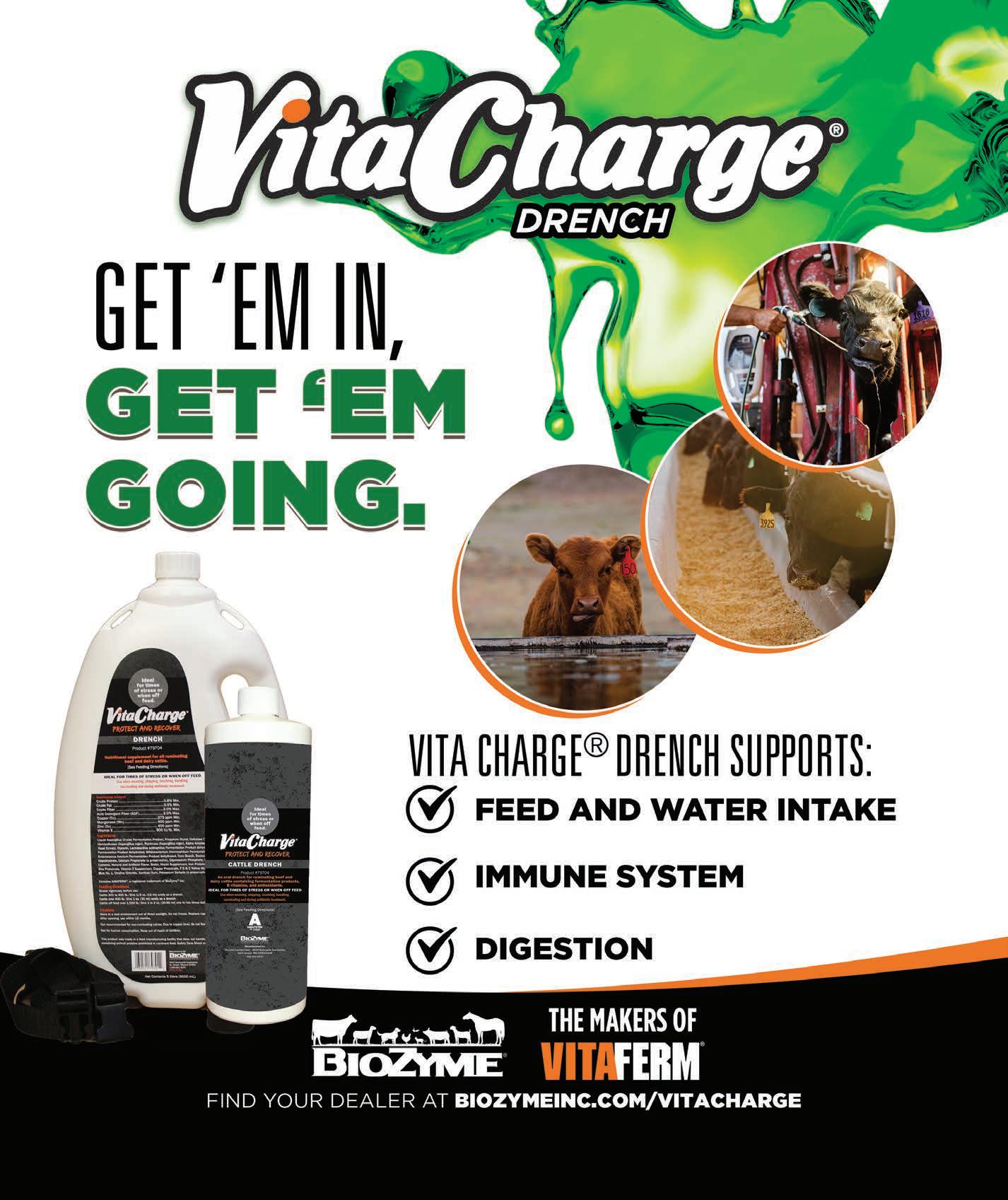
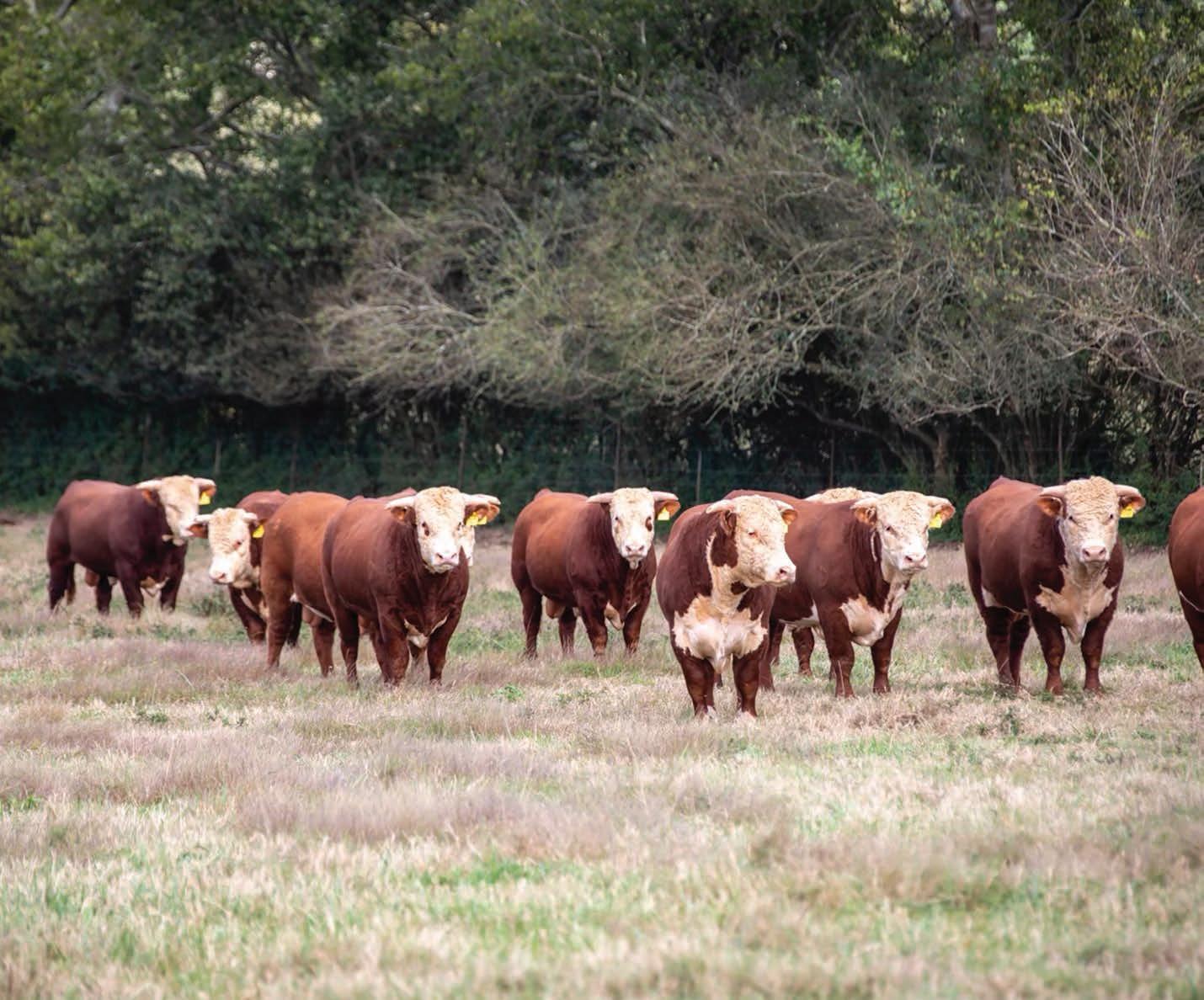



 by Wes Ishmael
by Wes Ishmael
Thinning cattle supplies coupled with resilient consumer beef demand continue to push prices higher and faster than earlier expectations.
Feeder steer prices (600700 pounds) at the start of July were $61-$71 per hundredweight (cwt.) higher year over year on a regional basis — up 30-40% — according to USDA’s National Weekly Feeder and Stocker Cattle Summary (see Table). More broadly, the CME Feeder Cattle Index was
$231.41 the last day of June, up about 40% year over year.
The weekly average fivearea direct fed steer price began July at $181.33 per cwt. on a live basis. At least on a nominal basis, the price reached a new record high in April at $173.10. Since then, it has climbed as high as $188.75.
Beef consumers stay hooked Wholesale beef values, although beginning their seasonal descent in late June, remain at historically high
levels. The weekly Choice beef cutout value was $329.19 per cwt. the last week of June, up 24% year over year. Retail beef prices follow the same pattern with the monthly retail Choice beef price average in May at $8.08 per pound. So far, consumer beef demand remains steadfast and more resilient than previous history would suggest.
Of course, prices continue to increase for many meat and food items but at a more moderate pace than last year,
according to the latest Food Price Outlook from USDA’s Economic Research Service. For instance, food at home prices were 0.1% higher month to month in May and 5.8% higher year over year. Year-to-date prices were 4.7% more than the same time last year when food at home prices were 11.4% more year over year.
Likewise, although U.S. beef exports this year are less than last year’s record levels, international demand continues to underpin support.
April beef export value per head of fed slaughter was $441.70, the highest since last July, according to data released by USDA and compiled by the U.S. Meat Export Federation. Weekly national carcass premiums and discounts also underscore consumer desire for the highest grading beef. Although less than the previous year, Prime carcasses were bringing $14.72 per cwt. more than premium Choice (upper two-thirds) the first week of July. Premium Choice was bringing $4.83 more than Choice. Select grading carcasses were discounted $28.31 per cwt., relative to Choice; the discount was $7.26 more than the previous year.
Beef cow liquidation continues Plenty more price strength is on the horizon — barring
Estimated cattle slaughter
some other confounding black swan event — as cattle numbers decline.
The U.S. beef cow herd at the beginning of 2023 was the smallest since 1962, according to Derrell Peel, Extension livestock marketing specialist at Oklahoma State University (OSU), providing market insights at the recent Cattlemen’s Conference at OSU.
By all accounts, national beef cow liquidation continues. Yearling fed heifer slaughter remains elevated, albeit less so than last year.
Through the end of June, estimated year-to-date total cattle slaughter was 580,000 head fewer (-3.4% than the same time a year earlier. Estimated year-to-date beef production was 640 million pounds less (-4.6%).
Estimated beef production
1AMS National Weekly Feeder & Stocker Cattle Summary, weeks ending 7/01/23
2CME Feeder Cattle Index year over year 06/30/23
3USDA Five-area weekly weighted average direct slaughter cattle (negotiated), for the week ending 07/02/23
4National Weekly Boxed Beef Cutout and Boxed Beef Cuts (negotiated, weekly cutout value summary), weekly average for 06/26 to 06/30/23 and 06/27 to 07/01/22
5USDA steer byproduct drop value (FOB central U.S.), 07/05/22 and 07/05/23
6National Weekly five area direct slaughter cattle premiums and discounts, weighted average week of 07/05/22 and 07/03/23
7Meat Price Spreads, Choice beef values and spreads and all fresh beef retail value, USDA ERS; monthly values, cents per pound of retail equivalent (May 2022 and May 2023), cents per pound
8U.S. Meat Export Foundation data — YTD January-April 2022 and 2023
9CME futures 06/30/23 year over year
10 WTI-CME 06/30/23 year over year
11Estimated weekly meat production under federal inspection, year to date 07/01/23


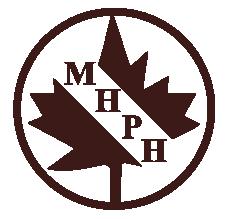







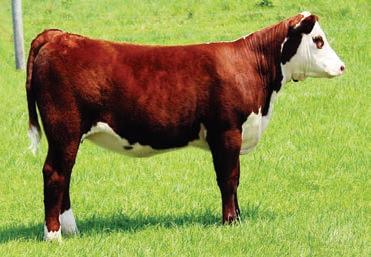

September 23, 2003 • Noon
High Prairie Farms • Fair Grove, MO
Featuring High Prairie Farms Mature Cow Herd Dispersal
9 Show-Me Select qualified spring bred commercial heifers sell!


Sired by LT Standard Lad 175C (43731325) and JAK L1 Domino D551 (43751063), out of purebred Angus and Hereford cows.



Bred AI to AW Statesman 038H (44177977) and pasture exposed to FTF Frontier 006H (44123207).
 P43821645 • Calved: 04/04/2017 Fall calving flush cow with several daughters that will sell.
P43603146 • Calved: 04/17/2015
Fall calving flush cow that has a 10Y daughter. We are currently using two of her sons in our herd.
P43609538 • Calved: 01/30/2015
Fall calving flush cow that has two outstanding Pilgrim daughters that will sell the 23rd. Be sure to look them up.
P43821645 • Calved: 04/04/2017 Fall calving flush cow with several daughters that will sell.
P43603146 • Calved: 04/17/2015
Fall calving flush cow that has a 10Y daughter. We are currently using two of her sons in our herd.
P43609538 • Calved: 01/30/2015
Fall calving flush cow that has two outstanding Pilgrim daughters that will sell the 23rd. Be sure to look them up.
Economic selection indexes offer commercial producers a powerful opportunity to select bulls for specific production scenarios without having to consider individual expected progeny differences (EPDs).

Consider the sheer number of EPDs. As an example, the American Hereford Association (AHA) calculates EPDs for 17 different traits. Next, think about the natural antagonisms existing between traits such as growth and calving ease. Making genetic improvement in specific areas without sacrificing gains in others can be challenging. That’s why selection indexes are so useful.
In simple terms, these indexes provide a single, economically weighted value aimed at breeding objectives for specific production scenarios. They account for multiple and antagonistic traits for each scenario.
For instance, the American Hereford Association (AHA) Baldy Maternal Profit Index (BMI$) is a maternally focused index for producers breeding registered Hereford bulls to Angus cows. It assumes some daughters are retained as replacements in the herd and the remainder of the calf crop is finished and marketed on a quality-based grid.
Essentially, all traits are important in this scenario, but Sustained Cow Fertility (SCF) is clearly the driver when you look at the average EPDs and percentile rankings for the top 20 active BMI$ sires in the Hereford breed (Table 1).
SCF is a longevity trait, which predicts a sire’s ability to produce daughters that last longer in the herd. A
cow that lasts longer in a commercial herd is going to bring more revenue back to the operation. So, it makes sense that this trait tops the list of importance for commercial producers building sought after F1 black baldy females.
Along with SCF, Weaning Weight (WW), Mature Cow Weight (MCW) and Milk (MM) are weighted slightly positively in the BMI$, ensuring females have adequate growth without increasing inputs. There is some negative emphasis on Dry Matter Intake (DMI), but a positive emphasis on Carcass Weight (CW), aimed at enhancing profitability from finishing nonreplacement females and castrated males. Marbling (MARB) and Ribeye Area (REA) are also positively weighted with Certified Hereford Beef® (CHB) success in mind.
The top 20 BMI$ bulls are also above breed average for all other traits in the index, except for Yearling Weight (YW) and Backfat (FAT), which are slightly below breed average. Arguably, moderate growth and more fleshing ability (FAT) make sense when producing females that last longer in production.
Consider the suite of traits utilized in the BMI$ (Table 1) and the percentile rankings of EPDs for the top 20 BMI$ bulls. Think about the genetic merit of the black baldy females these bulls will sire — efficient, moderate mature size, high-quality udder and carcass traits beyond breed average.
Selectionindexes help producers more simply and consistently place selection pressure on economically relevant traits that drive profitability in specific production systems.
In theory, using the index value (expressed as dollars) enables selection of bulls with appropriate levels of performance in all traits used in the index. Again, selection indexes assume specific production systems, so the economic weighting of each trait is different among indexes.

Other Hereford indexes
AHA offers two other economic selection indexes — the Brahman Influence Index (BII$) and Certified Hereford Beef® Index (CHB$).
The Brahman Influence Index (BII$) is also a maternally focused index based on a production system using BrahmanHereford-cross cows. Progeny of these cows are directed toward a commodity beef market, since CHB does not accept Brahman-influenced cattle. This index is similar in trait weighting to BMI$, but there is more emphasis on SCF and MARB. This is an all-purpose index where F1 females are retained; remaining cull progeny are marketed through commodity-based programs.
The Certified Hereford Beef Index (CHB$) is a terminal sire index that is built around a production system where Hereford bulls are mated to mature commercial Angus cows and all progeny will be targeted for CHB after the finishing phase. This index has significant weight on CW and MARB to ensure profit on the rail. As well, there is a positive weighting for Average Daily Gain along with a negative weighting on DMI to ensure efficient pounds of growth in the feedyard. In addition, there is a positive weighting for REA and a negative weighting for FAT to maintain desirable USDA Yield Grades. This is the only index that has no emphasis on fertility. Remember that no replacement heifers are being retained.
Bottom line, selection indexes help producers more simply and consistently place selection pressure on economically relevant traits that drive profitability in specific production systems.
AHA selection indexes also serve as the cornerstone to several programs designed to help commercial producers select Hereford seedstock and to market subsequent progeny. AHA economic selection indexes serve as genetic qualifiers for these programs since commercial cattle profitability is the basic premise of these indexes.
Examples of economic index values:
CHB$

Sire A: $130
Sire B: $100
Difference: $30
BMI$
Sire A: $450
Sire B: $300
Difference: $150
Explanation — Sire A will sire progeny that should be $30 more profitable when fed out and marketed on a dual-based grid when compared to the progeny of Sire B, if comparably mated.
Explanation — Sire A will sire daughters that are $150 more profitable over their lifetime due to their added longevity and/or their ability to raise more profitable offspring when compared to daughters of Sire B, when comparably mated.
The Premium Red Baldy program is geared toward commercial producers building red baldy females, who select Hereford bulls ranking at or above the top 50% of the breed for BMI$. Also supported by the Red Angus Association of America, this female-only program promotes the storied quality of red baldy females. Qualifying females are recognized with a special tag denoting their genetic promise of additional longevity, docility and profitability.
The Maternal Advantage program is designed for commercial producers selecting Hereford bulls ranking at or above the top 50% of the breed for either BMI$ (Angus-based) or BII$ (Brahman-based). This program also recognizes the added longevity, docitlity and profit potential of the F1 female resulting from crossbreeding Hereford bulls to Angus or Brahman-based females.
For more information about AHA economic selection indexes, please go to Hereford.org/genetics/breed-improvement/traitdefinitions. For more information about AHA commercial programs, please see Hereford.org/commercial/programs.
Hereford Advantage is designed for commercial producers selecting Hereford bulls ranking at or above the top 50% of the breed for CHB$. Progeny from these bulls should be equipped with the necessary feedlot performance, efficiency and end-product merit, to warrant added buyer attention regardless of when they are marketed.
Jim and Beth Herman 6753 C.R. C75 Edgerton, OH 43715 419-212-0093 Jim cell jimbethherman@metalink.net
Tim, Stephanie, Ashleigh and Andrew Osborn 3537 Second Creek Rd. Blanchester, OH 45107
Tim: 937-655-0644
Home: 937-783-2869
timosborn@frontier.com

THF Toby 3H
Selected in 2022 for the NRSP by Olsen Ranches.

TWIN HILLS FARMS
Jeff and Andrea Cramer Apple Creek, OH and Fresno, OH 330-464-1810
jeffcramer@hughes.net
Polled Herefords LLC



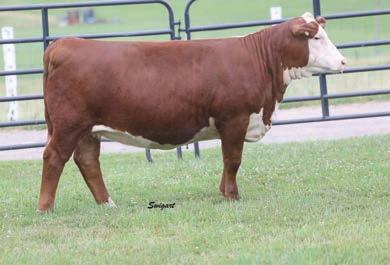

Jerry and Mary Ann Berg 16821 Withrich Rd. P.O. Box 224 Dalton, OH 44618 330-857-7967 330-465-6185 cell jwberg@bright.net
Mohican Farms
Conard and Nancy Stitzlein 4551 State Rt. 514 Glenmont, OH 44628
Matt Stitzlein 330-231-0708
Alexis Stitzlein 330-231-9538
lexstitz@gmail.com
Visit us on Facebook Mohican Polled Herefords



J&L Cattle Services
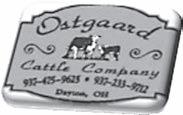
Jeff, Lou Ellen and Keayla Harr 334 Twp. Rd. 1922 Jeromesville, OH 44840
Cell 419-685-0549
jlcattleserv@aol.com
Berlin Heights, OH 44814
Lisa Finnegan Keets, Secretary 440-320-6193 ohioherefordlady@yahoo.com
Brian, Lisa, Jen & Ellie Keets
10708 Main Rd. Berlin Heights, OH 44814
Brian 419-651-0978
Lisa 440-320-6193
ohioherefordlady@yahoo.com
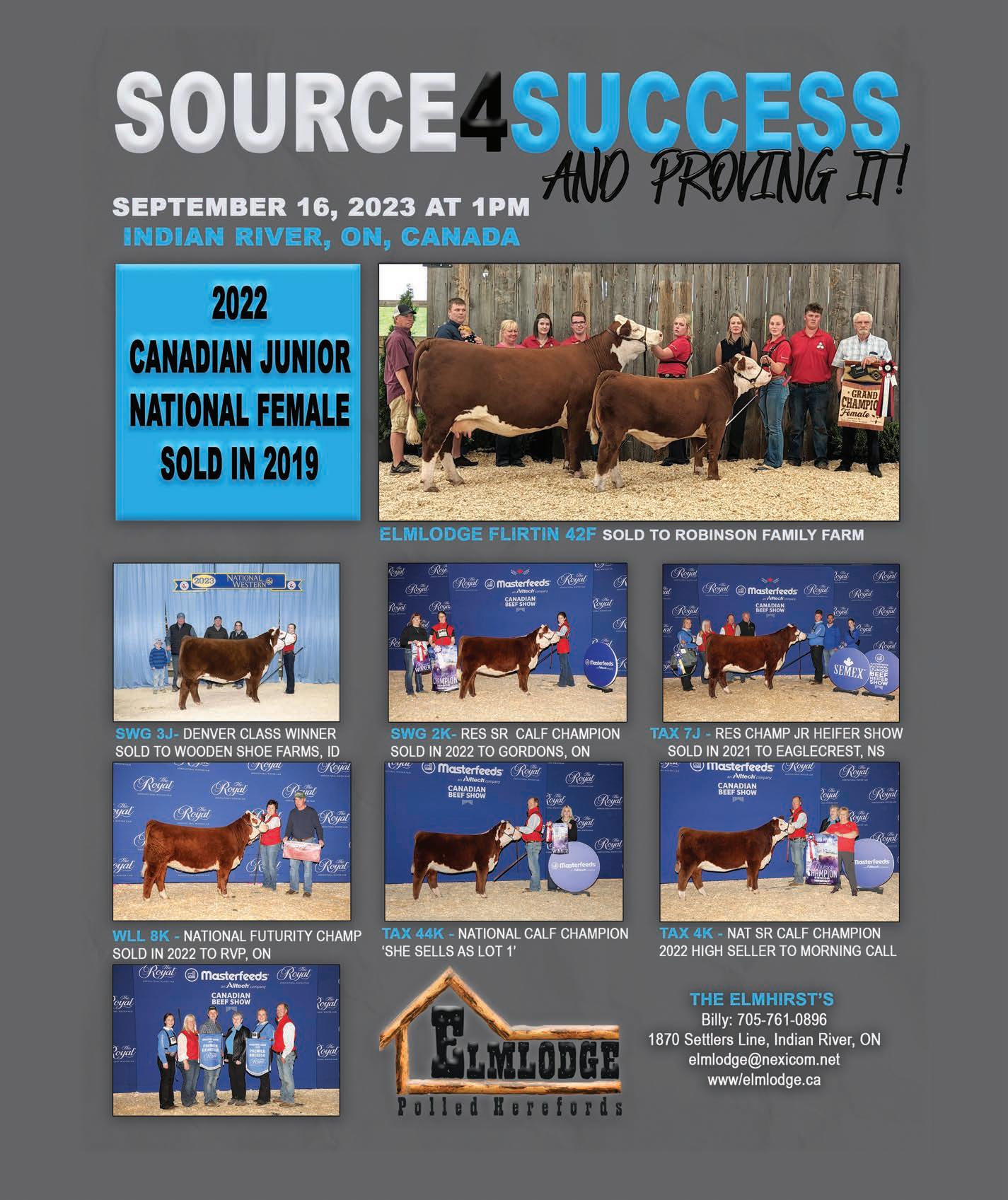
When it comes to making genetic progress in a herd, major decisions are made twice a year — selecting sires and selecting replacement heifers. The importance of genomic information and expected progeny differences (EPDs) when it comes to selecting bulls that will sire more than 20 calves a year is often discussed, but have you ever thought about the impact a female has on your operation? Not only is she likely your most expensive

input cost, but she is also responsible for half of the genetics that contribute to your replacement heifers each year, as well as to the bull prospects developed by seedstock producers. Furthermore, depending on how many replacement heifers you keep out of her, she may have a genetic impact on your herd for years to come.
What is your current protocol for selecting replacements? Age, weight, phenotype, pelvic measurements and genetics
are all important data points to consider. While EPDs cannot replace these things, they can help you better understand each female’s strengths and weaknesses and allow you to better place potential replacement females into their most profitable production scenario. Genomically elite females may become donor dams for seedstock producers, while others may be better suited for someone else’s breeding program.
Likewise, commercial producers harness the power of genomics when they select bulls with genomic-enhanced expected progeny differences (GE-EPDs) and selection indexes. When doing so, it is recommended to also use commercial genomic profiles to help identify genetically superior replacement heifers who inherit the superior DNA from the bulls purchased.
Let’s create a scenario where you have a set of four halfsibling replacement heifers to choose from. All are from the same influential AI sire that you selected for that year. Phenotypically, these females all match your selection criteria, and all were born on the same day. Their biggest differences can then be found in the DNA they inherited from their sire and dam. This could apply to a registered breeder or a commercial operation interpreting a commercial genetic test.
Now, even though they all have the same sire, that doesn’t mean they inherited the same pieces of DNA from him. Even within a sperm cell there are more than 1 billion different combinations of chromosomal inheritance. To show how this occurs in
a real-life example, Table 1 includes American Hereford Association (AHA) GE-EPDs on four half-sibling females, all sired by the same bull. Comparing each heifer’s genetic values can help to differentiate otherwise similar females.
While there are some maternal and terminal traits of interest listed, the table also includes their overall Baldy Maternal Index (BMI$) and Certified Hereford Beef (CHB$) economic index values. These are a representation of their maternal and terminal attributes, respectively. Here is a summary of how each female “measures up” to her siblings.
• Calf A: The highestranking sibling for CHB$, supported by superior EPD values for carcass weight (CW) and
ribeye area (REA). While above average, she is the lowest in the group for BMI$. Given her lower predictions for calving ease (CE) and sustained cow fertility (SCF), it is likely this female would be more profitable in a terminal focused herd.
• Calf B: The highestranking sibling for BMI$, with increased EPD values for CE and SCF. Her lower weaning weight (WW) EPDs correlated to lower terminal traits of interest and a lower CHB$ index value. Although, given her superior EPD for marbling (MARB), if bred to a more terminal bull, this heifer could prove valuable as a replacement.
• Calf C: This heifer just kind of falls “middle of the pack” for both indexes and most of the traits listed above. Her BMI$ value of 404 is above breed average, and she is also above average for CE, WW and SCF. Overall, given the information provided, there is nothing keeping her from being a replacement female.
• Calf D: Compared to her siblings, this heifer won the “genetic lottery.” She has the highest BMI$ and CHB$ values of the group. With her increased EPD values for CE, SCF and MARB she checks all the boxes. Not only would she make a good replacement candidate, but if phenotype and all other criteria aligned, she may even be donor dam material.
It is worth mentioning that this comparison is only meant for example purposes to show how EPDs can be used to make selection decisions. There is a multitude of other traits that are included in the AHA genetic evaluation that may be of large economic importance to an operation. There are also many other breeding programs and ideologies that could take the information provided and make different decisions than the ones discussed above. If you’re reading this and wanting to know how to specifically apply the concepts to your operation, the staff at AHA are more than happy to assist.
Editor’s note: Jamie T. Courter, Ph.D., is a bovine technical services manager for NEOGEN.

Mark
dpdp@dtcomm.net

615-765-5359 615-464-7008 www.dkmfarms.com
nrfowler@brecwb.com

dogwood@brtc.net
https://dogwoodherefords.com
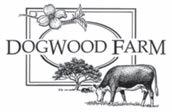
Jon Ray 75 Salem Ridge Rd. Brooksville, KY 41004

606-782-1737
jhrmhr2@yahoo.com
wells_farm@yahoo.com
565 Candy Meadow Farm Rd. Lexington, TN 38351
Rob Helms 731-968-9977
Randy or Steve Helms 731-968-2012
Heath Helms 731-614-3979
Fax 731-967-1445
Matthew Murphy 770-778-3367
3432 Red Bud Rd. N.E. Calhoun, GA 30701
Keene
Ben, Jane, Lincoln Clifford Noah and Shelby Wright 3459 KY Hwy. 1284 E. Cynthiana, KY 41031
Ben 859-421-7902
Lincoln 859-954-0102
Clifford Hereford Farms


Danny Miller
Jody Standley 919-291-4212
Kim Prestwood 828-320-7317
84 Austin Farm Lane
Clayton, NC 27520
4850 Caldwell Ridge Rd. Knifley, KY 42753
270-465-6984
jmsfarm@msn.com
www.jmspolledherefords.com

Calves persistently infected (PI) with the bovine viral diarrhea (BVD) virus are the Trojan horse of the beef industry, sneaking the costly virus into cattle operations.
“This virus can cause immune dysfunction; some strains cause the immune system to overreact when cattle are stressed, such as at weaning,” explains Chris Chase, DVM, South Dakota State University. “If calves are subjected to stress and have BVD at the same time, it makes them much more susceptible to any respiratory diseases, coccidiosis or whatever else they might be exposed to.”
Diagnosing BVD without testing is difficult because symptoms often mimic other diseases. BVD can cause abortion, fetal mummification, birth defects and malformations, stillborn full-term calves, PI calves with immune deficiencies, and acute or chronic illness with a variety of signs. This virus is also an indirect cause of many other diseases because it hinders the immune system. Pinkeye, scours and other maladies can occur because BVD lowered the animal’s defenses, allowing another infection to get started.
PI animals are infected in utero as a fetus by a BVD infected dam during early pregnancy. PI animals shed the virus as long as they live.
“Most persistently infected calves don’t live long enough
to become adults, but some do. They continually shed the virus and are super-shedders,” Chase says.
Cattle infected with BVD after birth are regarded as acutely infected or transiently infected (TI). After TI animals clear the infection and recover, they no longer shed the virus.
“Even if cattle are vaccinated, it won’t always protect them,” Chase says. “If some get stressed, their immune response to pathogens may be inadequate. If they have close contact with a PI animal on the day they are stressed, they may become infected.”
While the BVD virus can be transmitted from cattle with BVD (TI), most transmission within herds stem from PI transmission, according to Cheryl Waldner, DVM, University of Saskatchewan. Consequently, she says controlling BVD requires preventing the birth of PI calves.
Testing is key “Doing some blood tests in the cows and measuring antibodies can reveal their immune status. With many diseases, antibody levels are usually not a good indicator of whether or not a herd has been infected, but with BVD, it is,” Chase says. “Antibody levels in an infected animal are much higher than what we’d see with an animal that has been vaccinated.” Taking a few blood samples now and then can be a way to monitor BVD status of a herd.
If your cattle come into contact with other cattle, such as in a community pasture, Chase suggests checking all of your calves the next year by sending ear notch samples to check for BVD.
“You might have had a clean herd, but when a cow is pregnant, if she is exposed to this virus at a certain stage during the first 120 days of gestation, even if she’s been vaccinated, there is still some risk. If she has contact with a PI animal in someone else’s herd, she may be vulnerable,” Chase says.
You probably wouldn’t know her calf is PI unless you test it, according to Waldner.
“You might suspect a calf could be PI if he’s a little smaller and a poor doer, but there can also be calves, young cows or bulls that look healthy and are persistently infected,” Waldner says.
Chase advises producers to test. If they have a relatively closed herd (not much contact or co-mingling with other cattle) it might not be necessary to ear notch all the calves every year.
“But the advantage of testing all calves each year is that the PI animals can be identified and eliminated,” Chase explains.
Biosecurity is crucial, but difficult with community pastures or fence-line contact, especially if your neighbor brings in new animals.
“When you buy new stock, test and quarantine before you add them to your herd,” Chase recommends. “If it’s a
reputable seller who tested the cattle just prior to when you get them — and they don’t go through a sale barn or any place they might be in contact with other animals — you may not need to quarantine them. But if you buy animals you are unsure about, quarantine them for 30 days.”
Chase suggests pulling a blood sample when the animal arrives, quarantining it and then pulling another sample 30 days later.
“If the animal has never been tested, I recommend doing the ear notch when it arrives to make sure it is not PI,” Chase says. “If it’s not PI, a blood sample upon arrival and another one 30 days later will tell if it was exposed and became infected before it got to your place. The virus runs its course, and most animals will clear the virus within 30 days,” he says.
Further, Chase says it is important to take ear notches if there are several unexplained deaths in a herd or feedlot.
“Animals found down or dead might not show anything at necropsy, but could be PI animals,” Chase explains. “Even if you see something else wrong, it’s wise to do an ear notch test to be on the safe side and know whether the animal was PI.
“If you tested the rest of the herd, you might not think there’s a problem if all the animals tested were clean, but if you forget about the one that died (and didn’t have it tested), it could have been a
PI, creating some exposure in the herd.”
Keep in mind the number of PI animals in beef herds has increased over the past several years, according to Chase.
“Part of the reason is that we are not monitoring for BVD as much as we did earlier, and there is a strain called BVD1b that may have
become more prevalent,” Chase says. “Most of our vaccines are pretty good against BVDV1a and 2a because those are the two original strains we knew about. Now BVDV1b has emerged, and it’s different. Viruses keep changing and always seem to figure out a way to evade control.”
Work with your herd health veterinarian to assess and manage BVD risk.
“Many people think that if they just vaccinate, everything will be OK. But if you don’t eliminate PI animals, you can’t vaccinate your way out of a BVD problem,” Chase says.
Several tests exist to diagnose BVD (bovine viral diarrhea), according to Gregg Hanzlicek, DVM, Kansas State University Veterinary Diagnostic Laboratory. He assists veterinarians investigating complex herd health problems and works with pathologists and microbiologists.
“We are looking for carriers, so the tests we use are looking for the organism itself,” Hanzlicek says.
Immunochemistry is one of the tests. It utilizes tissue samples, chemical reaction and examining the sample microscopically.
“There are also a couple of ELISA (enzyme-linked immunoassay) tests. One is called an antigen-capture ELISA. This test sets up a reaction between the virus in the sample and the antibody to the virus contained in the test kit,” Hanzlicek explains. “If the virus is present, it causes a reaction that can be visually seen. Another ELISA test is the BVD SNAP test. It can be completed chute-side, with results in a few minutes.”
PCR (polymerase chain reaction) represents the most recent testing technology.
“One advantage is that it can quantify the amount of virus in the sample,” Hanzlicek says. “By using the PCR and assessing the number on the test result, we have a good idea whether that animal is a PI (permanently infected) or a TI (transiently infected) animal. But it’s still wise to retest to see if the animal cleared up or is still harboring the virus.”
Next steps
“If you have an animal with a positive test result, you should probably quarantine and retest that animal in three to four weeks because both the ELISA and the PCR find not only the cattle that are persistently infected, but also animals that are transiently infected,” Hanzlicek explains. “Those transiently infected animals will fight off the infection and no longer be shedding any virus, usually within a few weeks.
“People think it’s a hassle to retest in three to four weeks, but it’s best to remove both PI and TI animals from the group. A TI on the retest will be negative; it would then be safe to put those cattle back in the herd. By contrast, PI cattle should be sold to slaughter … whether the virus exposure is coming from a PI or TI makes no difference to the calf or cow that is exposed.”
Test samples can be ear notches or blood.
“Most people submit ear notches because they are easier to collect than a blood sample. Once you ear notch the animals you can also tell by looking at them that they’ve had the BVD test,” Hanzlicek notes.
However, he also says there are cases where unscrupulous sellers ear notch untested cattle to make buyers think the cattle were tested.
Editor’s Note: Heather Smith Thomas and her husband, Lynn, have ranched near Salmon, Idaho, for more than four decades. She also writes cattle articles that appear in numerous U.S. and Canadian cattle publications, including Hereford World. She is the author of numerous books, including “The Cattle Health Handbook.”

“This passes the disease to someone else,” Hanzlicek emphasizes. “Our lab tests loads of calves as they come into the Midwest and some have been found to contain multiple PI calves. In some of these situations you know someone put PI calves together and sold them as a group.”
Pooling diagnostic samples has advantages and disadvantages when sending samples to be tested.
“Typically, people request pooling for PCR tests to reduce cost. Pooling PCR samples can reduce the cost down to the ELISA cost or even less,” Hanzlicek explains.
However, if the lab finds a positive pool, then all animals in the pooled group must be re-tested to find the BVD-positive animals. So, he says don’t pool samples unless you are sure there are few, if any, PI animals represented.
“If you know there might be PI animals, request the test be completed individually or in small groups of six,” Hanzlicek suggests.
“If you can’t sample all your calves at once, put labeled ear notches in the freezer as you collect them. Each notch should be submitted in a separate container such as a Ziploc bag. You can send them as a group later for testing,” says Hanzlicek.
If you suspect BVD in a cow-calf herd, test the youngest animals first.
“Make sure you are testing calves before bull turnout or AI,” Hanzlicek says. “If there’s a PI calf in the herd during breeding season, it will be shedding virus, potentially transmitting it to bred cows in early gestation; you could end up with more PI calves born the next year. To find PI calves or screen for BVD, take an ear notch from every calf at birth or shortly afterward.”
If you find a PI calf, test the dam to make sure she is not PI, even though 97% of PI calves are born from TI dams infected during the first four months of gestation.
“These dams were temporarily infected at the wrong time of pregnancy,” Hanzlicek explains. “People often think PI calves are coming from PI dams, but that’s generally not the case.”
Finally, Hanzlicek says folks bringing calves to feedlots or stocker facilities should make sure none are PI.
“It’s best to test before they go on the truck, but that’s usually not practical, especially if calves are coming from sale barns,” Hanzlicek says. “They should be tested upon arrival, especially calves coming from areas where previous PI animals were diagnosed. With many of the tests, especially the PCR, results can be obtained within less than 24 hours. You can know the BVD status of those calves before exposing other calves.”
Success Breeds Success
Jeff and Stephanie Rawie Aaron and Kylie Noble 11768 W. Farm Rd. 34 Walnut Grove, MO 65770 417-209-5538
jeffrawie24@yahoo.com
Matt, Barb, Makayla, Tye & Lauren 1071 C.R. 1231
Huntsville, MO 65259
Cell 660-676-3788
Home 660-277-3679
reynoldscattle@cvalley.net www.reynoldsherefords.com
Annual Sale
Last Sunday in October
Gary and Frances Duvall 1082 Hwy. 97 Lockwood, MO 65682
417-232-4817
417-827-2163 cell
duvallherefords@keinet.net
Herdsman: Miguel Cifuentes 417-793-5082
Bradshaw Ranch Riley Bradshaw 12180 272nd St. La Belle, MO 63447 217-491-6096
bradshawranchcattle@gmail.com
Rusty and Marijane Miller 20500 Sioux Dr. Lebanon, MO 65536 Rusty, cell 317-840-7811
Marijane, cell 317-341-3846
millerherefords@yahoo.com
www.millerherefords.net

21658 Quarry Ln. Barnett, MO 65011
Alan Mead 573-216-0210
meadangus@yahoo.com
ANNUAL BULL SALES: First Saturday in March
Last Saturday in October
AL BONEBRAKE
Springfield, MO
417-849-1324
JAMES HENDERSON Herdsman
417-588-4572
www.bonebrakehereford.com


Rick and Laurie Steinbeck 2322 Drake School Rd. Hermann, MO 65041 573-237-2668
573-680-0954 cell
Polled Herefords and Red Angus Breeding Stock Available


Jim and Linda Reed P.O. Box 126, Green Ridge, MO 65332 660-527-3507 • Fax 660-527-3379 reedent@iland.net • www.reedent.com

A definite herd bull prospect by LJR MSU Grayson 217G. Predictable Journagan genetics for 40 years in this prospect.

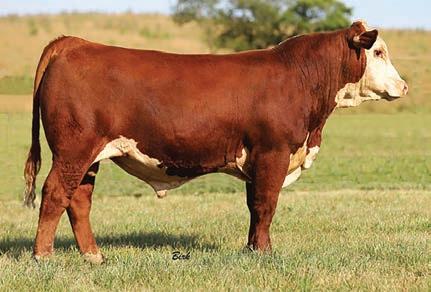
Trent, Mary and Family 9128 W. Farm Rd. 30 Walnut Grove, MO 65770 417-788-2787

Cell 417-830-7257
Fax 417-863-6884
Jim and Carla 417-466-8679

jimbellis@missouristate.edu
Jamie & Kevin 573-289-1061

Jonathan 417-440-1300
A top daughter of LJR MSU Grayson 217G. Bred to AW Statesman. The bred heifers are all top cut predictable genetics.
1371 Road F Emporia, KS 66801
Phone: 620-342-7538 Alton’s Cell: 620-794-2358 ammalone@lcwb.coop
Alton, Marie, Brian, Dustin and Michelle Malone
REGISTERED HEREFORDS
Skyler Storie 4534 State Hwy. 22 Conway, MO 65632 417-839-8401
sjstorie129@gmail.com
Gary and Debbie Doss 6200 N.E. 142nd St. Smithville, MO 64089 816-699-8831
DHF6200@aol.com
SHOENBERGER POLLED HEREFORDS
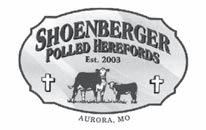

Eric and Kami –417-737-0055
Eric Jr. –417-860-7151

SPHHEREFORDS@OUTLOOK.COM
Mark Abramovitz and Terry Elwing Logan and Brianne Bishop 6969 Bass Ln. Columbia, MO 65201 5 73-864-6475 Cell 573-441-9951 Home/Fax telwing@gmail.com www.abracattleco.com
Cattle producers put a lot of effort and resources into vaccinating their cattle and offering high-quality feed and mineral. These efforts and resources are not fully utilized and can be wasted if cattle have parasites.
Most cattle producers associate internal parasites with a reduction in feed intake. Specifically, decreased appetite is the primary effect of internal parasites, which means there are fewer nutrients for an animal to absorb. Internal parasites also have a direct effect on nutrition absorption because they cause inflammation in the gut.
Reduced nutrient intake and absorption is detrimental to all cattle but especially to highly stressed animals. Typically, these animals already have lower feed intake without the added stress of an internal parasite challenge.
Internal parasites affect the nutritional status of the animal in three ways: they decrease feed intake, they
decrease nutrient absorption and they increase nutrient requirements. These effects on the animal’s nutritional status are important because they impact and compromise every aspect of biology including growth, milk production, immune function and reproduction.
counts) have been shown to have depressions in feed intake of up to 7.8%.1, 2
Internal parasitic worms burrow into the animal’s gastric glands and damage the gut lining. This causes the immune system to react and put its effort toward fighting the threat.
or another type of viral outbreak. It predisposes cattle to attacks from viruses, and viruses can open the door to bacterial infections.
Even a low number of internal parasites can affect cattle health and performance. Cattle with relatively low parasite burdens (324 total slaughter worm counts) have been shown to have depressions in feed intake of up to 3.2%. Cattle with high parasite burdens (11,164 total slaughter worm
Th1 and Th2 – both types of helper cells – play an important role in immunity. The Th1 response is the immune system’s response to a viral or intracellular infection. A Th2 response is not necessarily specific to parasites but is commonly associated with them. A Th2 response can block a Th1 response.
If there is enough of a worm burden that a Th2 immune response occurs, the immune system will focus almost solely on trying to get rid of the parasites and will not be able to handle an intracellular invader like coccidiosis, pinkeye
Younger animals, such as suckling calves, weaned calves, replacement heifers or stocker cattle are much more susceptible to parasites because they don’t have any immunity built up against them. This will develop as an animal gets older, but cattle are never fully immune to parasites.
In much the same way as a virus does, a modified live five-way vaccine is ideally going to trigger a Th1 response. If cattle are parasitized and a Th2 response is triggered, this can impact the animal’s ability to positively respond to the vaccine.
Vaccine labels say, “Effective for the vaccination of healthy cattle.” It is important to deworm cattle ideally one to two weeks prior
Rains, J. P. Hutcheson, and R. A. Smith. 2000. Pasture deworming and (or) subsequent feedlot deworming with fenbendazole. II. Effects on abomasal worm counts and abomasal pathology of yearling steers. Bovine Pract. 34:115-123.
3J. S. Schutz, J. A. Carroll, L. C. Gasbarre, T. A. Shelton, S. T. Nordstrom, J. P. Hutcheson, H. Van Campen, T. E. Engle. Effects of gastrointestinal parasites on parasite burden, rectal temperature, and antibody titer responses to vaccination and infectious bovine rhinotracheitis virus challenge. Journal of Animal Science, Volume 90, Issue 6, June 2012, Pages 1948-1954, https://doi.org/10.2527/jas.2011-4059
4Kevin Gould, M. S. U. E. (2022, January 21). Beef cattle deworming strategies. MSU Extension. Retrieved May 18, 2022, from https://www.canr.msu.edu/news/ beef_cattle_deworming_strategies.
5Dobson R, Jackson F, Levecke B, Besier B, et al. Guidelines for fecal egg count reduction tests (FECRT). World Association for the Advancement of Veterinary Parasitology (WAAVP) (2011) Proceedings: 23rd International Conference of the World Association for the Advancement of Veterinary Parasitology.
Even a low number of internal parasites can affect cattle health and performance.
— Grant Crawford, Merck Animal Health1Smith, R. A., Rogers, K. C., Huse, S., Wray, M. I., Brandt, R. T., Hutcheson, J. P., Nichols, W. T., Taylor, R. F., Rains, J. R., McCauley, C. T. Pasture deworming and (or) subsequent feedlot deworming with fenbendazole. I. Effects on grazing performance, feedlot performance and carcass traits of yearling steers. The Bovine Practitioner. 2000. 34(2), 104-114. 2Taylor, R. F., D. H. Bliss, R. T. Brandt, Jr., W. T. Nichols, J. R.
to vaccination and give them time for their immune system to respond.
Several studies have demonstrated the benefits of proper deworming on the health status of an animal. Research shows that calves dewormed two weeks pre-vaccination maintained lower rectal temperatures following an infectious bovine rhinotracheitis (IBR) challenge than those dewormed at vaccination or not dewormed at all.3 This means they were better able to withstand the disease challenge than those that had not been dewormed.
An Oklahoma trial compared the effects of deworming calves on pasture during the suckling phase and after weaning in the stocker phase.1 Morbidity was highest in cattle that were never dewormed and lowest in cattle that were dewormed in both phases. Additionally, cattle that were never dewormed were treated more times for respiratory disease than those that were dewormed in either or both phases.
Deworming cattle ahead of vaccination doesn’t have to mean a trip through the chute or intensive labor. Using feed and mineral forms of dewormers — such as range cubes, dewormer blocks or mineral — require relatively little time and labor and are highly effective.
This is important to consider, especially midsummer. If dewormed at turnout, cattle will start picking up parasites almost immediately once they are on green grass, and those parasites can start doing damage almost immediately. If cattle are not dewormed until
they come off the pasture in the fall, they have several months of picking up worms and damaging their gut.
It also is important to deworm calves at the cows’ sides. At about 6 to 8 weeks of age, calves start ruminating and are at high risk of internal worms. Deworming at earlier stages of infection can result in improved weaning weights. For spring-calving herds, typically, it is good to deworm calves six to eight weeks after turnout onto pasture.4
There is not always a visual sign of parasitism. After deworming, we often don’t know how effective the deworming was and the amount of time before reinfestation occurs.
A fecal egg count reduction test (FECRT) is the standardized diagnostic tool to test manure for the presence of internal parasites’ eggs. It is important that 20 samples are taken both at treatment and 14 days post-treatment. A successful deworming should result in a 90% or greater reduction in parasite eggs in feces.5
You can request a free FECRT kit from Merck Animal Health. Work with your veterinarian and animal health representative to assess your deworming program and find the timing and formulations that work best for your operation.
Editor’s note: Grant Crawford, Ph.D., is a Merck Animal Health associate director of technical services. Copyright 2022 Merck & Co. Inc., Rahway, NJ, USA, and its affiliates. All rights reserved.

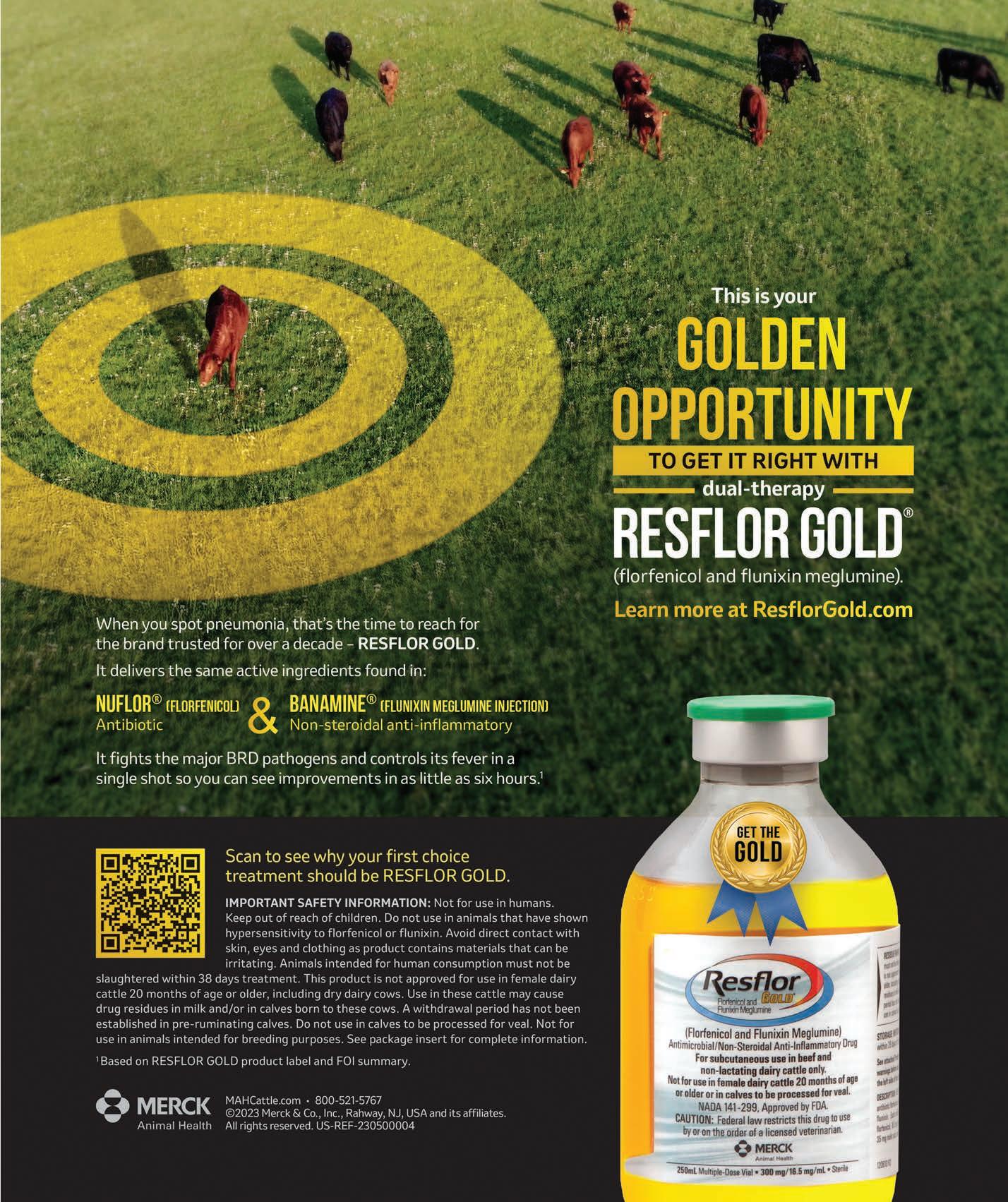
When it comes to ranch record keeping, more Hereford breeders use CattleMax than any other software program. That’s because, not only does CattleMax let you organize every bit of data you need, it lets you do so easily , whether you’re at home or in the field.
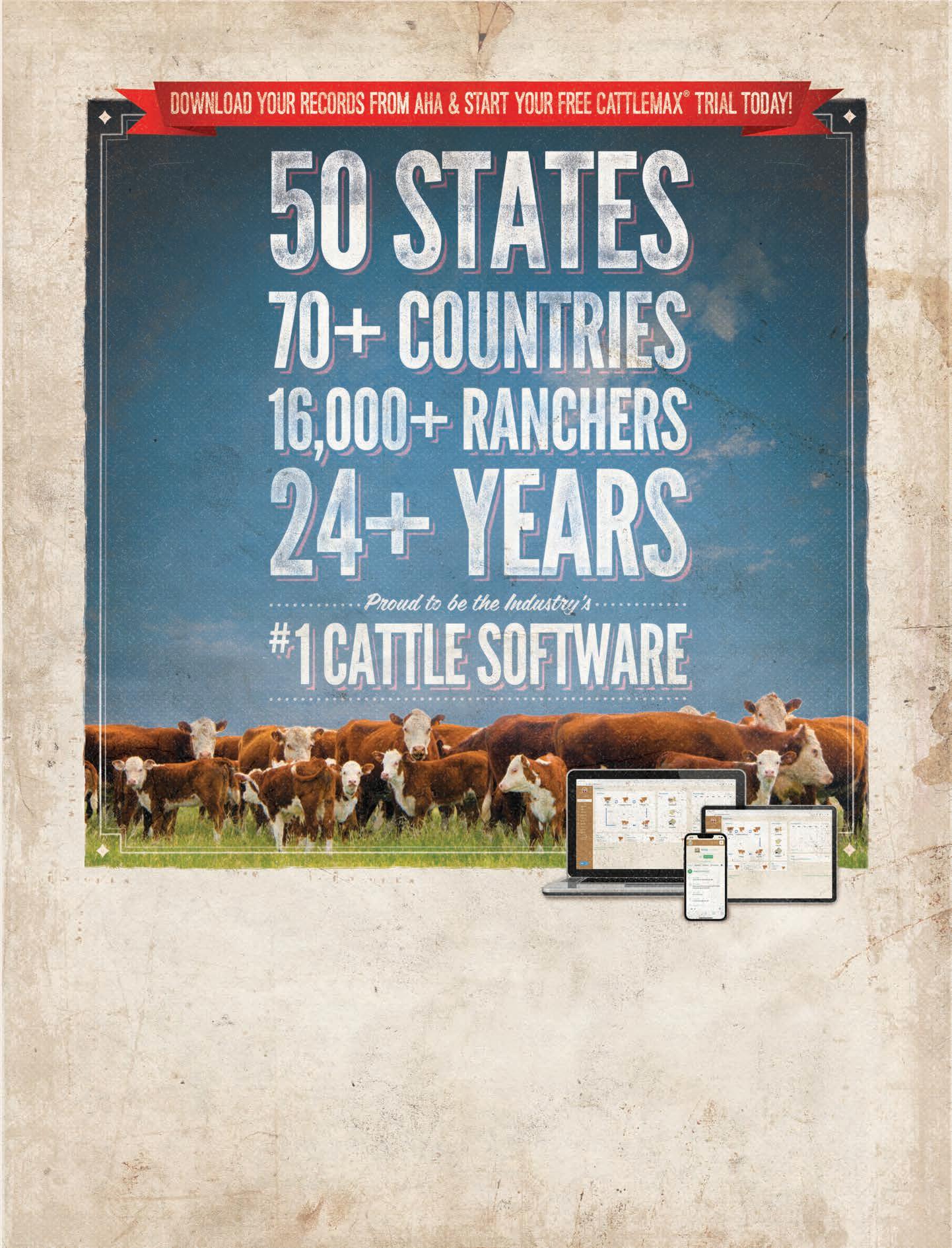
“What’s New?” is a column designed to keep you in the know about Hereford happenings. You can sign up for Hereford Headlines, an electronic newsletter distributed the first Friday of each month by the American Hereford Association (AHA) highlighting Hereford news and events. You can also receive the Bald Faced Bottom Line, a commercially-focused electronic newsletter sent the third Friday of each month. To subscribe to these free newsletters, send an email to outreach@hereford.org. Archived issues are posted at Hereford.org.
Plan to be in Kansas City
Join us Oct. 20-22 in Kansas City, Mo., for the 2023 American Hereford Association (AHA) Annual Meeting and Educational Forum. This year’s event is a can’t-miss opportunity for progressive cattlemen and women focused on numbers that matter.
The schedule includes an educational forum and trade show on Friday, Oct. 20. The Hereford Youth Foundation of America (HYFA) Scholarship winners and the National Junior Hereford Association (NJHA) Fed Steer Shootout winners will be recognized at a special awards luncheon on Friday, Oct. 20, in conjunction with the educational forums. The Annual Meeting and Hereford Honorees breakfast will take place Saturday morning, Oct. 21, and will honor the 2023 Hereford Heritage Hall of Fame and Hereford Hall of Merit inductees. The national show award winners will be recognized before the Ladies of the Royal sale on Saturday, Oct. 21. The National Hereford Queen will be crowned on Sunday, Oct. 22.
The AHA nominating committee is pleased to announce the six candidates nominated for election to the AHA Board of Directors. The candidates are:
Tom Boatman, Rockford, Ill. 404-372-6754
tomtammy@perksranch.com
David Burns, Pikeville, Tenn. 615-477-5668 burnsda2@gmail.com
Jerry Delaney, Lake Benton, Minn. 507-820-0661 jdh@delaneyherefords.com
Cindy Pribil, Hennessey, Okla. 405-853-5232 rpribil65@pldi.net
Linda Sidwell, Carr, Colo. 970-381-6811 office@sidwellherefords.com
Scott Sullivan, Grannis, Ark. 870-584-8990 sullivanscottn@yahoo.com
Congratulations to Darrin Reed, Reed Polled Herefords, Clifton, Kan., for his success at the 2023 Beef Empire Days. Reed is a fouryear participant in the Hereford Feedout Program (HFP). His steer placed fourth in the carcass contest — a USDA Prime, yield grade 2.66 carcass. The steer was fed by HRC Feed Yards in Scott City, Kan., as part of the HFP.
Hereford breeders are encouraged to attend and network with commercial producers, buyers and market representatives at summer video auction sales.
July 31-Aug. 4 — Superior
Livestock Auction – Video Royale, Winnemucca, Nev.
Aug. 8-9 — Cattle Country Video – Oregon Trail Classic, Gering, Neb.
Aug. 14-15 — Western Video Market, Cheyenne, Wyo.
Aug. 21-25 — Superior
Livestock Auction – Big Horn Classic, Sheridan, Wyo.
Aug. 21-22 — Northern Livestock Video Auction – Early Fall Preview, Billings, Mont.
Sept. 6-7 — Superior Livestock Auction – Labor Day, Hudson Oaks, Texas
Sept. 12 — Western Video Market, Ogallala, Neb.
Sept. 14 — Cattle Country Video – Sandhills Roundup, Cheyenne, Wyo.
Sept. 18 — Northern Livestock Video Auction – Fall Premier, Billings, Mont.
For more information about AHA commercial programs, such as the Hereford Advantage or Premium Red Baldy Programs, contact Trey Befort at tbefort@herefordbeef.org.
Youth Scholarship deadline approaching
The HYFA fall scholarship deadline is Sept. 1. HYFA will award more than $200,000 in scholarship money throughout the year, including $165,000 in scholarships during the AHA Annual Meeting and Conference in Kansas City, Mo. Scholarships must be submitted online through Submittable. To learn more, visit HerefordYouthFoundation.org/ scholarships.
Deadline for queen applications
National Hereford Queen applications are due Sept. 1. For more information, email nationalherefordwomen@gmail.com.
Enter the Fed Steer Shootout
Learn more about the cattle feeding sector and how your genetics perform in the feedlot by participating in the 2024 NJHA Fed Steer Shootout. The contest entry deadline is Nov. 1, 2023, and delivery for cattle to HRC Feed
Yards in Scott City, Kan., is Dec. 9-13, 2023. For more information and planning your delivery of cattle, contact Trey Befort at tbefort@herefordbeef.org. Cattle can be entered individually or in pens of three and must meet the following qualifications:
• 2023-born steers
• Purebred Hereford and commercial Herefordinfluenced steer categories
• 600-pound weight minimum
• Be weaned at least 45 days prior to delivery
• Received two rounds of vaccinations
Visit Hereford.org/Youth/ NJHA-Fed-Steer-Shootout to enter and learn more.
Hereford World
Glossy advertising rate change
Hereford World glossy issues and the Baldy Advantage commercial issues (previously the Hereford World tabloids) advertising rates now follow the same pricing. The new glossy pricing structure is effective with the September 2023 Hereford World. The pricing is as follows:
• Full-page, four-color: $1,320
• Half-page, four-color: $990
• Quarter-page, four-color: $770
• Full-page, black-and-white: $880
• Half-page, black-and-white: $550
• Quarter-page, black-and-white: $330
• Seedstock directory (per inch, per year): $385
FALL BULL SALE
Entry deadline: Aug. 31st
Hereford and Brahman


Already consigned: Smith Hereford, Schmidt Hereford, Bill Breeding, Rafter J, Case Hereford, OH Triangle, Moscatelli

PRIDE of TEXAS
FEMALE SALE

Entry deadline: Sept. 30th
Registered and commercial Hereford


Registered and commercial Brahman
Certified Brafords
True F1 (1 parent Hereford) Black or Red Baldy (1 parent Hereford) Watch
Consigned to Hereford Night in OKC

Sire: BOYD 31Z BLUEPRINT 6153
Dam: BB CHARLIE 13G
Confirmed bred to KCF Bennett Resolve, due to calve March 2024.
Rd. • Platteville, WI 53818
Find us on facebook @ bevanfamilybeef


—Cadott,WI— Cell:715.313.3234
E-mail:starckfarm@gmail.com
100%AIsiredherdand wholeherdDNAtested!


Jerry, Maryann, Michael and Karl Huth
W9096 County Trunk AS Oakfield, WI 53065 920-251-0281
jerry@huthcattle.com
www.huthcattle.com


N8494 110th St. Spring Valley, WI 54767
Fred, home 715-772-4680
Fred, cell 715-495-0837
Easten, cell 715-495-6233
Jerry, home 715-772-4566
www.larsonherefordfarms.com
AD
Contact NOAH BENEDICT 217-372-8009 or noahb@hereford.org
Tod, Sondra, Blake and Bryce Brancel W7874 Hwy. 23 Endeavor, WI 53950
608-617-6949 cell
608-697-9026

Ben and Gail Brancel 608-981-2003 brancel@nextgenerationgenetics.com
Mark Friedrich and Family 1454 70th Ave. Roberts, WI 54028 715-760-2350
markfriedrich@yahoo.com
W13707 Hwy. 44 Brandon, WI 53919
Brent Hopp
920-266-6936 and
Emma Hermsdorf 608-628-2330
hoppbre@gmail.com
Facebook @ H&H Cattle Farm
Polled Herefords
Chuck and Tracy Badertscher
4313 Cannonball Tr. Dodgeville, WI 53533 608-574-2002 Chuck 608-574-3858 Tracy ctbad2@hotmail.com
Eric, Rosie, Briana, Rhett and Madison Katzenberger Monroe, WI 608-214-1154
Nick and Lenore Katzenberger Pearl City, IL
JOSH and AMY SPAETH 2515 250th St. Cadott, WI 54727 715-289-4098 spaethherefords@gmail.com www.spaethfarms.com
Butch and Maryellen • 715-597-2036 • Cell 715-828-7271
Brandon: 715-533-2470 • Garritt: 715-586-0033
Michael 715-533-3370 • Tiffany: 507-582-1175
HEREFORDS
our only business

Ken and Sandy 608-434-0578
Travis and Megan 608-434-2843
Jim and Veronica
E10645 Hatchery Rd. Baraboo, WI 53913 ken254@centurytel.net

Pierce’s Hereford Haven

Issac and Stephanie Knuth
E4924 Narrows Creek Farm

Loganville, WI 53943
608-415-7511
iknuth@knuthconcreteandconstruction.com
AD SPACE AVAILABLE
Contact NOAH BENEDICT 217-372-8009 or noahb@hereford.org


hjh@whiskeyrunfarms.com www.whiskeyrunfarms.com
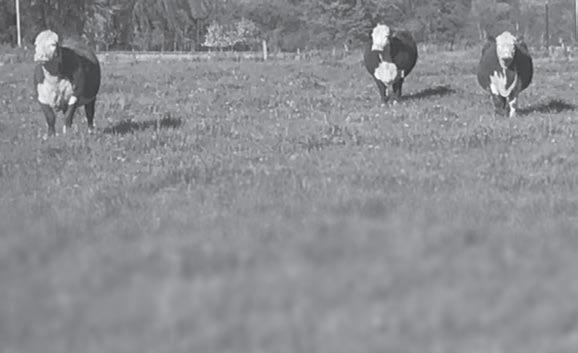
Hank and Charlotte Handzel and Family 2791 Sime Rd.
Cottage Grove, WI 53527 608-839-5207 Main 608-235-9417 Cell
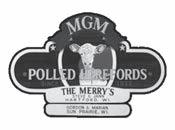
N. Water
Manawa, WI 54949 920-596-2580 Fax 920-596-2380 starr@wolfnet.net
Steven, Jill, Nicole, Curtis, Alison and Austin Folkman N250 Highview Rd. Ixonia, WI 53036 920-474-7403 262-617-6346 cell cnlfarm@hughes.net www.cnlfarm.com
Investing, Breeding and Exhibiting Elite Hereford Cattle

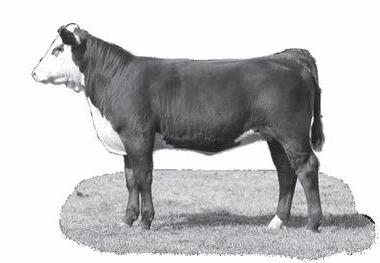

Eric 262-719-6902 Allison 262-751-6406
Tessa, Makenna, Austin & Killian
www.FourLeafCattle.com




Harold and Connie Lietzau 7477 Iband Ave. Sparta, WI 54656 608-633-2875
Troy and Michelle Jaydon, Devon and Jocelyn Taylor and Ty Taylor cell 608-487-0015

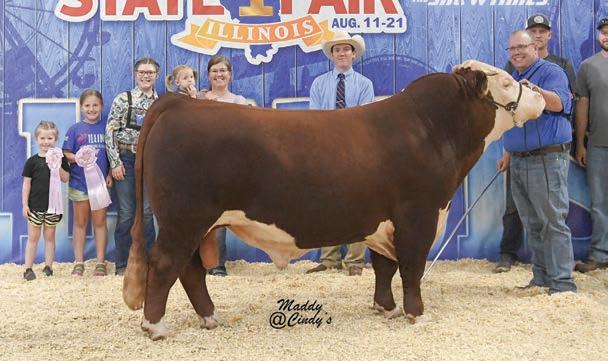



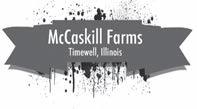

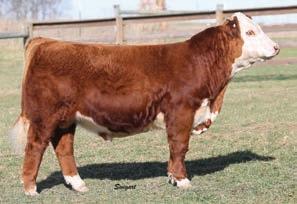


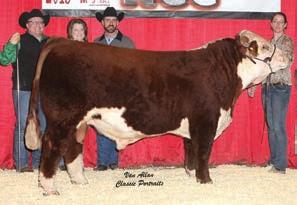
Tuscola, IL 61953

Dave, Marcia & Elise Hackett
Dave: 217-621-1761
Elise: 217-621-6864
davehackett91@yahoo.com
35073 E. C.R. 1550 N. Mason City, IL 62664
bhrnds@speednet.com

Brent, cell 217-971-5897
Samantha, Todd, Rachel and Zach Parish 618-926-7388
www.parishfarms.com

136 Penfield, IL 61862 Buddy 217-649-0108 Bailey 217-714-4955 Cody 217-871-9708 edenburnfamilyfarm@gmail.com
1764 U.S.
Steve Lorenzen 17696 E. 1825th Rd. Chrisman, IL 61924 217-269-2803

www.lorenzenfarms.com

Floyd, Annette and Brittany 815-223-4484
John Fauth 700 Baldwin Rd. New Athens, IL 62264 618-920-3716

fulabul2@hotmail.com
Chad, Erin and J.W. 815-712-5739
LaSalle, IL 61301
c_herfs1@yahoo.com
Lonny, Kim (Carney) and Riley Rhodes 18736 Cross Creek Rd. Carlinville, Il 62626 217-899-4104 Cell rhodesfarminc.kim@gmail.com
Cattle and Embryos for sale at all times




Cameron and Bailey Curry of Curry Herefords, McAlester, Okla., announce the birth of their daughter, Carsyn Leigh Curry. She was born on June 21. Carsyn weighed 7 lbs. and 1 oz., and she was 20 1/4 inches long. Big sister, Eliza Laine Curry, is happy to welcome Carsyn to the family.
In Passing
Max Clifford
(MC) James, 89, Beaver, Okla., passed June 25.
MC was born Sept. 12, 1933, in Balko, Okla. He was welcomed into the family by parents, Harold and Opal James, and sister, Loretta.
After graduating from Bethany High School in 1951, he attended one year of college at Abilene Christian before returning home to help his father with the farm.
MC was a faithful follower of Christ, teaching Sunday school where he met and fell in love with Bonita Dean. On June 5,
1954, he and Bonita married and established their home near Beaver. Together they worked on the farm. MC held various jobs, working at a local grocery store in Beaver and later in Liberal, Kan., at Beechcraft as he gradually developed his herd of registered polled Hereford cattle. He used selective breeding over 70 years for which he became well known. In 2019 he received the Golden Breeder Award by the American Hereford Association recognizing his efforts.
During that time MC branched out more and started a dairy business, working hard to build a strong foundation for his family. MC and Bonita purchased and operated a dry goods store in Beaver for 17 years and established a seed cleaning business for area farmers.
MC and Bonita worked side by side until Bonita’s death in 2000.
MC continued his life in Beaver County, Oklahoma, and met Becky while attending church. They forged a friendship and later were married March 20, 2002. They continued to raise polled Herefords as well as clean seed wheat for the area farmers with the help of son, Greg, and granddaughter, Kara, for two decades.
MC was preceded in death by parents, Harold and Opal; wife, Bonita; son, Greg; and great grandson, Zaydek.

Survivors include: wife, Becky; sister, Loretta Almand, Ft. Worth, Texas; children, Janice and Tom Statzer, Edmond, Okla., Denise and Larry Bennett, Okarche, Okla., Laura Ryan, Eureka, Calif., and Anna Templin, Tulsa, Okla.; grandchildren, Jamie Farrow, Kristi and Kenny DeFord, Danielle and Chris Rankin, Kara and Carl Roberts, Dustin Bennett, John Ray Eccles III,
Lynleigh Eccles, Mason, Samuel and Paul Templin, and Isaac Zein; great-grandchildren, Ella Farrow, Braylan James and KaeDena Roberts, Kaden DeFord, Bennett and Case Rankin, and John Ray Eccles IV; and many other aunts, uncles and cousins too numerous to name.
Clifford Webster
“Bud” Sloan, 84, Hamilton, Mo., passed June 30.
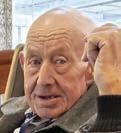
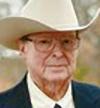
A legend can only be imitated, never duplicated.
Clifford “Bud” Sloan embodies this sentiment. When Bud spoke, everyone listened. He commanded attention without demanding it. His unmatched reputation was grounded in humility. With a work ethic second to none, his impact on youth is immeasurable. After a lifetime of helping others in the livestock business, Bud’s life will be remembered as one of the most extensive and respectable careers in the livestock industry.
Bud established his reputation in the livestock industry at a relatively young age, gaining the respect of cattlemen. His appointment as beef cattle superintendent of the American Royal in the early 1970s showcased his expertise as a herdsman, consultant and superior cattle marketer. His dedication, extensive experience and management techniques earned him a promotion to livestock superintendent in 1991.
Neil Orth, former executive vice president of the American International Charolais Association, emphasizes Bud’s long and successful career in the merchandising of purebred livestock. Being in business since 1971 speaks volumes about Bud’s trustworthiness, honesty and respectability.
However, Bud’s success did not come overnight. He paid his dues and worked relentlessly to achieve his goals. Born in Kingston, Mo., in 1939, Bud grew up on a livestock and grain farm in Hamilton. At the tender age of 11, Bud’s father passed away, leaving him and his older brother responsible for the farm and teaching their mother how to drive. Bud developed a strong work ethic from an early age, taking on various jobs such as clipping sheep, milking cows and working in a clothing store.
Actively involved in 4-H and FFA, Bud’s FFA chapter consistently ranked among the top two or three in the state. His successful show career exhibiting pigs and cattle laid the foundation for his expertise in cattle evaluation and handling. In 1957, Bud married his childhood sweetheart, Doris Blackburn Sloan. Their shared adventures included raising four daughters, two grandchildren, one greatgrandson and countless head of livestock.
Bud’s livestock career began after high school when he joined Ruben Edwards as a herdsman in Middletown, Mo. At HampAn Farms, Bud diligently worked with Hampshire hogs and Angus cattle, gaining valuable experience in marketing and sale management. He then spent 10 years at Dor Mac Angus Farms in Lyma, Ill., working for J.C. McLean, an inductee of the Angus Heritage Foundation.
McLean played a pivotal role in Bud’s knowledge and experience, as they raised four consecutive international bull champions and achieved numerous other accomplishments. Bud started his show circuit in July with county fairs, traveling across the country fitting and showing
 Bud Sloan AHA CORNER
MC James
Bud Sloan AHA CORNER
MC James
cattle. One of Bud’s notable moments was witnessing the entry of the Dor Macs Bardoliermere 150th Angus show bull, representing one of the last Dor Mac bull champions in 1959.

In the late ’60s, Bud transitioned from herdsman to livestock merchandiser. He joined the Drover’s Journal in 1968, where he worked alongside colleagues Neil Orth and Stanley Stout. Bud’s salesmanship skills developed rapidly as he traveled across the Midwest, selling advertising and marketing livestock. The Drover’s Journal, a weekly livestock publication, provided a fertile training ground for Bud, exposing him to various auctioneers and fieldmen.

In 1971, Stout informed Bud about a new business venture, leading to the establishment
of North American Auction Company with Curt Rodgers. As one of the first businesses in the purebred cattle industry to offer full-service marketing, North American pioneered new and innovative techniques. Their early success included selling more than $12 million in Charolais cattle sales in the first year.



Bud’s involvement in the American Royal spanned over 44 years. Serving as either beef cattle superintendent or livestock superintendent, Bud played a vital role in reorganizing the structure of the American Royal, transforming it into the premier show it is today. His dedication to the industry led to the establishment of scholarships and financial assistance programs for youth involved in agriculture.
Bud’s impact extended beyond his professional achievements.
He served as a mentor and advisor to countless individuals seeking his guidance. His colleagues and peers recognized his talent and named him the Livestock Marketeer of the Year in 2008, further validating his contributions to the industry.
When asked about his success, Bud attributed it to hard work and the people around him. He believed in building relationships and fostering trust, which has been the cornerstone of his remarkable career.
Bud’s legacy in the livestock industry remains etched in the hearts and minds of those who have had the privilege to know him. He is a true legend, leaving a lasting impact on the industry and a generation of future agriculturists who have been inspired by his dedication, expertise and unwavering integrity.
Steve Sellers served as the director of communications for the Georgia Cattlemen’s Association until his death in 2022. Previously Steve held positions with EDJE Technologies, Auction.com and other firms. Steve and his wife, CeCe, called Lake Park, Ga., home.
Mike Sorensen is the longtime owner and publisher of Livestock Plus (LPI) magazine. Based in Iowa, Mike made LPI a household name traveling the country and providing ring service for some of the most progressive purebred breeders. Mike and his wife, Dixie, reside in Greenfield, Iowa.
The Livestock Marketeers held their 58th Annual Hall of Fame Banquet in Kansas City, Mo., on June 13. This year’s host was the American Hereford Association (AHA) and Certified Hereford Beef® The 2023 class of inductees was comprised of Steve Sellers (posthumous), Mike Sorensen and Joe Rickabaugh.

Joe Rickabaugh has served as the AHA central region field representative and director of seedstock marketing since 1999. Before his tenure at AHA, Joe worked for the Kansas Livestock Association. Joe and Tracey Rickabaugh currently live in Topeka, Kan. This year’s event saw the introduction of the Livestock Marketeers Scholarship. This award is aimed at college-age students who are interested in entering the livestock marketing industry.
 The 2023 Livestock Marketeers inductees (l to r) Joe Rickabaugh, Mike Sorensen and Bruce Miller, representing Steve Sellers.
The 2023 Livestock Marketeers inductees (l to r) Joe Rickabaugh, Mike Sorensen and Bruce Miller, representing Steve Sellers.
Nancy and Tim Keilty 6192 S. French Rd. • Cedar, MI 49621 231-228-6578
www.cottonwoodspringsfarm.com

Ron’s Cell 517-230-7431
Jill’s Cell 517-627-4327 jilllemac@aol.com
Michigan Hereford Association CODY HILEMAN 989-802-2366
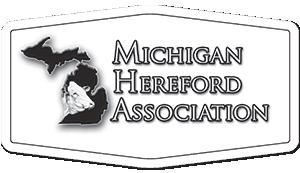


hilemanherf@gmail.com
Larry and Margaret Breasbois Heather and Matt 310 E. Freeland Rd. • Merrill, MI 48637 989-835-6748 • mbreasbois1@gmail.com
Paul and Christie Johnston Cole and Andrew 3162 S. Five Mile Rd. • Merrill, MI 48637 989-859-1131
Phil and Chris Rottman
2148 S. Croswell • Fremont, MI 49412 231-924-5776 • pcr@ncats.net
www.pcrherefords.com


Performance Bred Bulls
Pete Bramschreiber 906-863-2052
• grand meadows farm • Dave, Jill and Kristin Bielema Ben and Lindsay Gandy Reed, Kara and Fox Loney greatlakesherefordbeef@gmail.com grandmeadowsfarm.com 616-292-7474
beefssr@gmail.com
David, Bonnie and Logan Forgette 737 U.S. Hwy 41 • Carney, MI 49812 David 906-458-3233 Logan 906-295-1652
davidforgette63b@gmail.com
Making Show Cattle that Make Momma Cows!
Gary and Karen Simpson
Waveland, IN 765-918-1499
Rodney, Jackie and Jayden Simpson
Roachdale, IN 765-376-2155

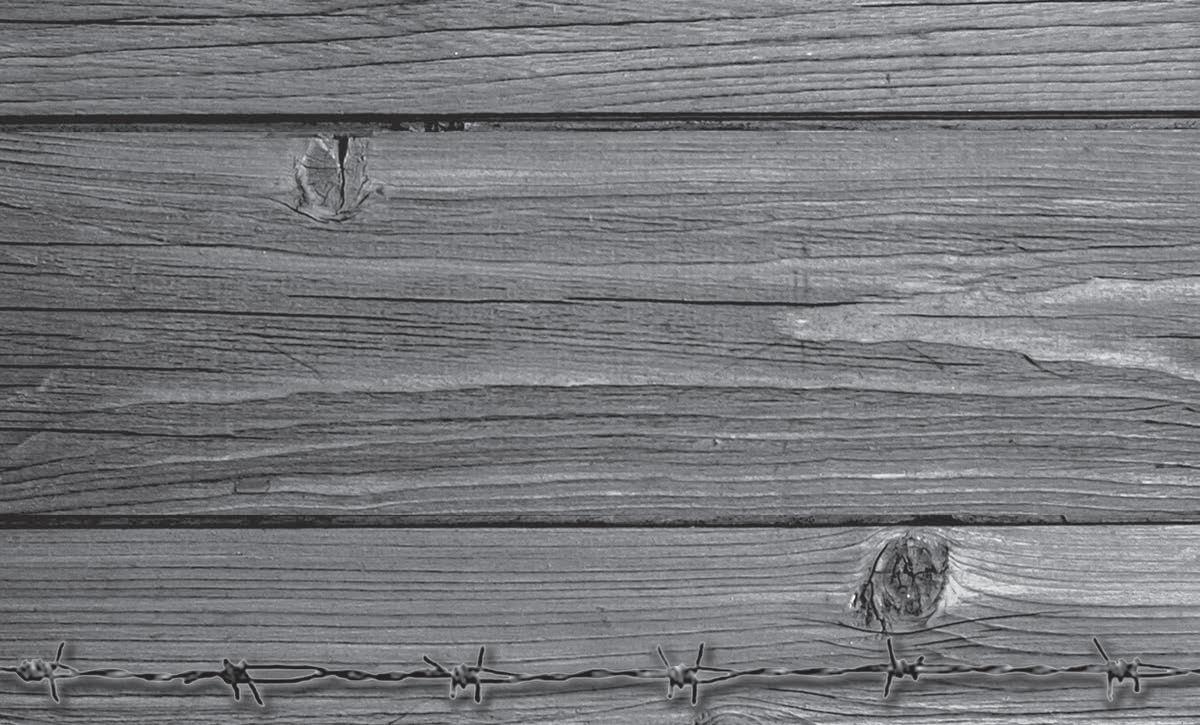
rj_simpson@tds.net
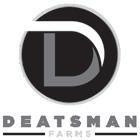
HayhurstFarms@aol.com

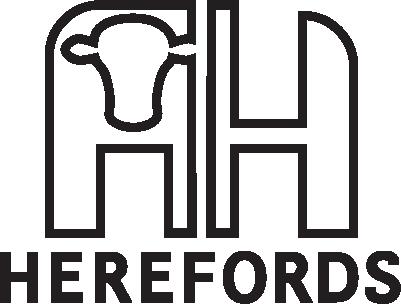


478-625-7664
3600 Ludlow Rd. Good Hope Community Lena, MS 39094 601-654-3584
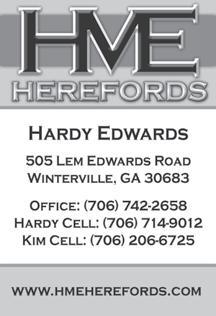
omaraj@phelps.com

jason@jasondayconstruction.com
www.DayRidgeFarm.com


Herdsman
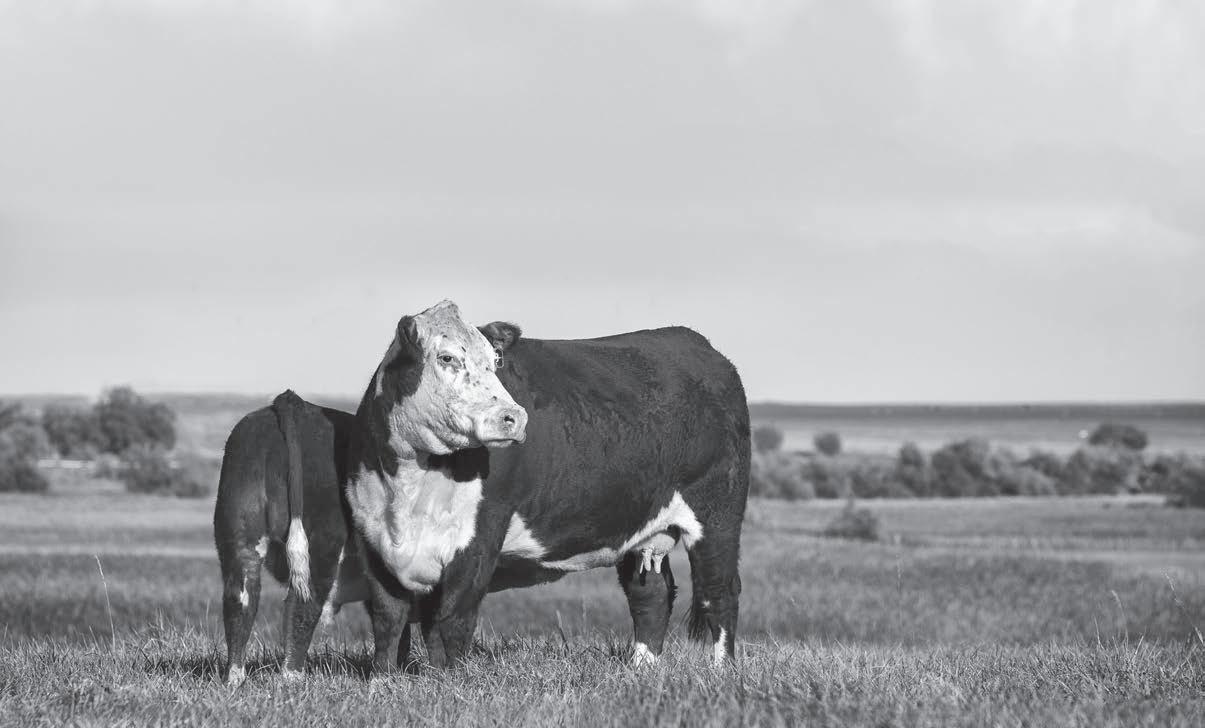
P.O. Box 215 Cross Plains, TN 37049 615-478-4483

billymjackson@aol.com
jacksonfarmsherefords.com


Glynn Debter, Perry Debter or John Ross Debter 205-429-4415 or 205-429-2040
4134 County Hwy 30 • Horton, AL 35980 debterfarm@otelco.net
Randy & Kelly Owen
John & Randa Starnes
John: 256-996-5545
Red, White, and Black: Dixieland Delight Angus, Hereford Production Sale 1st Sat. in May

Roland Starnes: 706-601-0800 553 Randy Owen Dr. NE Fort Payne, AL 35967 www.tennesseerivermusic.com cattle@tennesseerivermusic.com


Brandon Theising
High Cotton Bull Sale

Last Monday in October
1975 E. Roosevelt Rd. • El Nido, CA 95317
Gino Pedretti 209-756-1609
Mark St. Pierre 209-233-1406
Gino Pedretti Jr. 209-756-2088
High
The Mickelson Family P.O. Box 2689 Petaluma, CA 94953 707-481-3440 Jim 707-396-7364 Bobby JMMick@sonic.net sonomamountainherefords.com
Practical
8 05-526-2195
8 05-358-2115 cell Simi Valley, CA 93062-1019 b randon@pwgcoinc.com www.pwgcattle.com

P.O. Box 1019
Steve Lambert Family 2938 Nelson Ave. Oroville, CA 95965 Cell 530-624-5256
lambertranchherefords.com


Jim McDougald Manager 559-822-2178
McDougald Family 559-822-2289

Registered Herefords 46089 Rd. 208, Friant, CA 93626


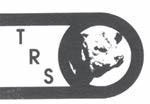

Registered Herefords & Angus Barry, Carrie and Bailey Morrell
5640 Co. Rd. 65 Willows, CA 95988
Carrie Cell 530-218-5507
Barry Cell 530-682-5808
morrellranches@yahoo.com
Bryan cell 970-381-0264
Linda cell 970-381-6811
sidwell@ezlink.com
W.C.R. 27 | Carr, CO 80612
James and Dawn Anderson / Bev Bryan Bryan and Charly Anderson / 208-280-1505
1973 S. 1500 E., Gooding, ID 83330 jbbalherefords.com
Private treaty bull and heifer sales Herefords Since 1967
Shaw Cattle Co.
S22993 Howe Rd. Caldwell, ID 83607 www.shawcattle.com greg@shawcattle.com
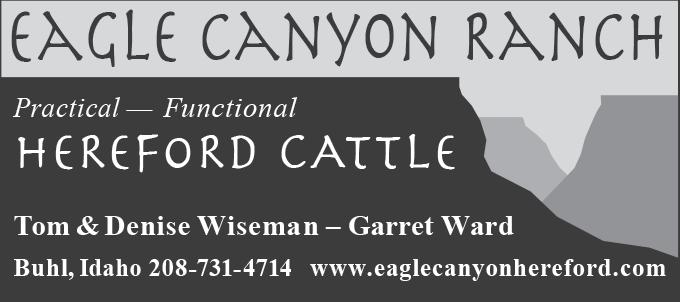
Polled Herefords • Brafords
Jonny and Toni Harris 334 K-Ville Rd. Screven, Ga 31560 912-586-6585 • Cell 912-294-2470 greenviewfarms@windstream.net www.greenviewfarms.net
Square and Round Bermuda Grass Hay Performance and Quality from Grazing since 1942

THE BULL BUSINESS

Greg: (208) 459-3029 Sam: (208) 880-9044 5540-998 )802( :rekcuT
Ron Shurtz: (208) 431-3311



Neal Ward Family 673 N. 825 W. • Blackfoot, ID 83221 Alicia Billman 208-589-0870 • 208-684-5252 woodenshoefarms@gmail.com

31058 Colyer Rd. Bruneau, ID 83604 www.hereford.com
Guy and Sherry Colyer – 208-845-2313
Guy cell – 208-599-0340
Kyle cell – 208-250-3924
Katie cell – 208-599-2962
Debbie McConnell Box 253, Kincaid, IL 62540 217-237-2627
danielsherefordranch@yahoo.com
Gary’s cell 217-827-2761 Farm is 1.5 miles west of Sharpsburg, Ill.
Bur Ns POlled HerefOrd farm
Sherwood Burns 618-521-3678

Keith Elkington 208-521-1774
Layne 208-681-0765
Eric 208-881-4014
RANGE READY, PERFORMANCE PROVEN Visitors always welcome.
ELKINGTON POLLED HEREFORDS

5080 E. Sunnyside Rd. • Idaho Falls, ID 83406
N. 50th St. Oblong, IL 62449
Darrel and Anna Behrends Jim Behrends & Leonda Markee • Kim & Liz 29014 E. C.R. 1000 N. • Mason City, IL 62664 217-482-5470 dab3741@cassblue.com • www.ohfherefords.com
Andrew Paquette 1725 East 3400 North Rd. St. Anne, IL 60964 815-671-0589 Andrew apaquette15@gmail.com
Hobbs Rd. Rochester, IL 62563 Office 217-529-8878 Greg 217-725-7095

Randy and Jamie Mullinix 997 Twp. Rd. 150E Toulon, IL 61483
309-995-3013
Randy 309-853-6565 • Jamie 309-853-7674 purplereign76@gmail.com • www.purplereigncattle.com

Cows for sale at all times
Curtis, Tobie, Erica and Ethan Kesling 1918 W. Delaware Rd. Logansport, IN 46947 574-753-3193
LAUDEMAN FAMILY FARM
Nate and Courtney Wirtjes 9272 Freeport Rd. • Durand, IL 61024 815-629-2441 • Cell 815-871-9118 • wirtjes2@msn.com
Visitors always welcome • Member of The Offense
Tim and Tracie Sayre Seely, Kendi and Kira Sayre 13188 Virginia Rd. • Arenzville, IL 62611 217-473-5143 sayreherefords@gmail.com
Eric, Cindie, Cassie and Krista Allscheid 8052 Andy Rd. • Waterloo, IL 62298 Cell 618-593-9642 soph@htc.net www.ShingleOaksPolledHerefords.com
www.douthitherefords.com



Gene, Lori, Lucas, Logan and Cory Stumpf 473 Gilmore Lake Rd. Columbia, IL 62236
GENE 618-407-8374
LORI 618-407-0429

LUCAS 618-830-0971
Jeff and Kelly Yoder 2356 N 1230 E. Rd. Edinburg, IL 62531 jwyoder62@gmail.com
Kyle 217-565-3275 • Brian 217-827-9708 • Adam 217-823-9763
Douglas E. Gerber 5324 State Rd. 227 S. • Richmond, IN 47374-9425 765-935-5274 Cell • 765-220-1070 douglas@gerbercattle.com • www.gerbercattle.com
Todd’s cell 574-298-4959
cjlaudy@fourway.net www.laudemanfamily.com
Jason’s cell 574-209-6470
3629 5th Rd., Bremen, IN 46506 Connie, Todd and Cassie, Jason and Jeni, and Bryan Rob, Kristie, Kylie and Logan 7477 E. 825 N. • Otterbein, IN 47970 765-491-0258 kristielm2001@yahoo.com


Rod, Sue, Lisa and Sarah Stream 51590 St. Hwy. 14, Chariton,
“Straight Station Line Ones”
20161 Saline Rd. Lucas, KS 67648
Jon and Robin Herbel 785-324-2430 herbelxp@gmail.com

Since 1944… A respected cow herd and premier Hereford performance bull breeder 2271 C.R. 74 • Quinter, KS 67752
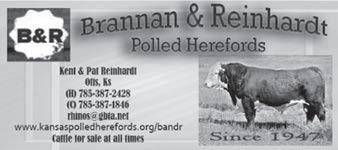


Gordon Jamison 785-299-0441

Daron Jamison 785-650-9639
Devin Sweitzer 785-299-0663 www.jamisonherefords.com
Kevin and Sheila and Family Kevin — Cell 785-243-6397 Sheila — Cell 785-262-1116 Box 197 • Courtland, KS 66939 jensenks@courtland.net www.jensenbros.net
“The Brand That Works”



Alma, KS
Chad, Karsten & Kasen Breiner 7 85-564-2091
David & Diane Breiner 7 85-456-4790
Ryan & Sharon Breiner 7 85-207-3070 millcreekranch.com • millcreekranch@embarqmail.com
Alex & Alison Mih, and Mariam Mih P.O. Box 2, Chanute, KS 66720 620-431-3917 • 620-212-3250 cell amih@mmherefords.com
Breeding cattle for economically relevant traits and performance. mmherefords.com




10272 S. Forsse Rd. • Falun, KS 67442 www.oleencattleco.com oleencattle@hometelco.net
Glenn 785-826-0870
Chuck 785-452-2961 Brandon 785-452-8148
Kevin and Vera Schultz Cell 620-546-4570
Tyler and Hannah Schultz 620-546-1574
Annual Production Sale • 4th Saturday in March Stop by for a visit anytime.


“YOUR BRAND OF HEREFORD” SCHUMANN


367 Hwy. 40, Lecompton, KS 66050 • 785-887-6754 brycegina@sunflower.com
LARSON 508 Rockfence Pl., Lawrence, KS 66049 • 785-843-5986 schular@sunflower.com
David and Delores Stump
Dan and Kim Schmidt 1128 Hwy. 9 Blue Rapids, KS 66411
Dave 785-556-0124
Dan 785-562-6685 info@springhillherefords.com • www.springhillherefords.com
Greg Umberger 3018 U Rd. • Rozel, KS 67574 620-527-4472
Cell: 620-923-5120 gregumberger@yahoo.com www.umbergerpolledherefords.com
MATHENY HEREFORDS
Brad, Carla, Clay, Clint, Caleb and Cooper 1011 Driftwood Lane Elizabethtown, KY 42701 Cell 270-668-7126 Fax 270-735-9922 bchambliss@priorityapproval.com
6706 US Hwy. 68 Mays Lick, KY 41055
Andrew, Suzanne, Austin and Taylor Belle Matheny
Andrew 606-584-5361 Austin 606-375-2167 amathenyherefords@gmail.com
TUCKER STOCK FARMS
Registered Angus and Polled Herefords

S F T
John A. Tucker, II 1790 Hidden Valley Lane Hudson, KY 40145 270-617-0301

BULLS ALWAYS FOR SALE
Registered Polled Herefords
Jay and Shelly Stull 10718-A Liberty Rd. Frederick, MD 21701 301-898-8552 www.eastsidehereford.com eastsidehereford@comcast.net Visitors welcome!
David and Lorie Kitchell Family
Matthew & Darci, Dawson and Dutton Kitchell 3471 State Hwy. 200 • Ada, MN 56510-9260 701-799-7690 • www.dakitchfarms.com


POLLED HEREFORDS
Robert and Susan Botkin 1999 Walnut Hill Rd. Lexington, KY 40515 859-271-9086
859-533-3790 Cell shane4413@windstream.net
Cattle for Sale at All Times
6077 Helena Rd. • Mays Lick, KY 41055
Charlie 606-584-5194 • Blake 606-375-3718 www.boydbeef.com
Jacob, Michelle and Andrew Wolfrey 3859 Federal Hill Rd. • Jarrettsville, MD 21084 410-692-5029 • GGSC@grimmelfarms.com www.grimmelgirlsshowcattle.com
Samuel C. and Linda Hunter • 301-824-4771 13651 Newcomers Rd., Hagerstown, MD 21742
HERD SIRES: KCF Bennett York D377, KCF Bennett D367 G391, KCF Bennett 776 G413 and SCH Sensation D503 G4
Jerry and Shelly Delaney & Family 2071 C.R. 101 • Lake Benton, MN 56149 507-368-9284 • 507-820-0661 Jerry cell jdh@delaneyherefords.com • www.delaneyherefords.com

Les Krogstad cell 218-289-5685 3348 430th St, Fertile, MN 56540 218-945-6213 • kph@gvtel.com www.krogstadpolledherefords.com
Darin Krogstad 16765 Welch Shortcut Welch, MN 55089 651-485-0159
2477 N.W. Main St. • Coon Rapids, MN 55448 We welcome your visit!
Doug and JoAnn 763-755-4930
Bryan and Marytina 763-389-0625
Bradley and Brigitte 612-720-1311
W7048 C.R. 356 • Stephenson, MI 49887
Glenn Hanson, Sr 9 06-753-4684
Glenn Hanson, Jr 9 06-630-5169 “Cattle made for the North in the North”

HEREFORDS
Troy Williamson 110 161st St. Garretson, SD 57030 507-597-6221 605-254-7875 Cell twilliamson@alliancecom.net
Chad Williamson 339 91st St. Pipestone, MN 56164 507-825-5766 507-215-0817 Cell springwater@svtv.com
Hwy. 28 W. • P.O. Box 753 • Hazlehurst, MS 39083 Dayne Zimmerman 704-906-1571 daynez@mindspring.com www.caldwellherefordranch.com
Herman Nunely and Family 204 Co. Rd. 994 • Iuka, MS 38852 Cell 662-279-5136
Home 662-423-3317 leaningcedarherefords@gmail.com
103 Earl McGuffee Rd. New Hebron, MS 39140 www.mcguffeeherefords.com
Joe McGuffee 601-672-0245
Typeface
Ryan McGuffee 601-668-1000 ryanmcgu@bellsouth.net
68 | August 2023 Hereford.org
Colton
Parker
Sims Ross
Ranch 662-462-5885 Don 662-284-9410 Colton 662-415-5885
122 Co. Rd. 358 Burnsville, MS 38833 donaldksims@hotmail.com

Marty D. Lueck, Manager Rt. 1, Box 85G • Mountain Grove, MO 65711 417-948-2669 • Cell 417-838-1482
Eric, Jr. 417-860-7151
Eric & Kami 417-737-0055
SPHHerefords@outlook.com
McMURRY CATTLE

2027 Iris Ln. Billings, MT 59102 406-697-4040 406-254-1247
TOM BIGLIENI AND JILL EWING 2109 Des Peres Rd., St. Louis, MO 63131 417-827-8482 • tgbig@sbcglobal.net
FARM ADDRESS: 3345 Lollar Branch Rd., Sullivan, MO 63080
Owner: Al Bonebrake
James Henderson, Herdsman 417-588-4572 • Springfield, MO
2.4 mi. E of 7 Hwy
ROD FINDLEY 32505 E. 179th St. Pleasant Hill, MO 64080 816-540-3711 • 816-365-9959 findleyfarms@gmail.com
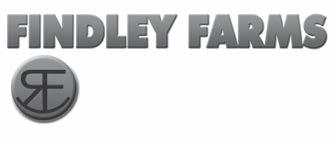
Straight Line One Cooper Holden Genetics
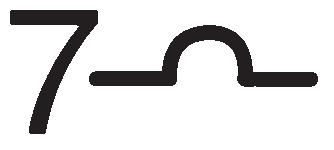
BULLS AVAILABLE AT PRIVATE TREATY
Harding Bros. Herefords
MARVIN AND EVERETT HARDING Rt. 2 • Ridgeway, MO 64481 660-872-6870
HIGH PRAIRIE FARM
Gregg and Denver Alsup 18 Alsup Ln. Fair Grove, MO 65648 417-766-6801
gailalsup@gmail.com
Chris and Susan Illg
13299 Bear Ave.
Cainsville, MO 64632
Chris 660-425-2561
illgcattleco@outlook.com
REGISTERED POLLED HEREFORDS
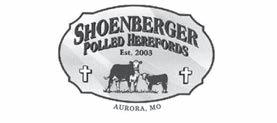
Genetics for Certified Hereford Beef®



Fred, Doreen and Rebecca McMurry
Squaw Creek Ranch 20 miles east of Billings www.mcmurrycattle.com mcmurrycattle@gmail.com
18 N Fork Road Townsend, MT 59644 (406) 422-6464 info@schockherefordranch.com

HERDSMAN: Dallas Casqueira (406) 461-4698

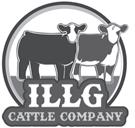
26 Years Line 1 Genetics
CURLEW Cattle Company
BULLS For Sale in the Spring Howard Moss 895 Whitetail Rd., Whitehall, MT 59759 406-287-9947
Mark, Della, Lacey and Jane’a Ehlke P.O. Box 1487 Townsend, MT 59644 406-266-4121
and Tammy 406-544-1536 Kurt and Jessica 406-239-5113 P.O. Box 30055, Gold Creek, MT 59733 bruce@thomasherefords.com www.thomasherefords.com
www.wichmanherefords.com
Registered bulls and females for sale by private treaty. Proven bloodlines, longevity, performance, functional justinwichman22@gmail.com
Justin and Carmen Wichman 1921 Wichman Rd. 4 06-350-3123 cell Moore, MT 59464 4 06-374-6833 home
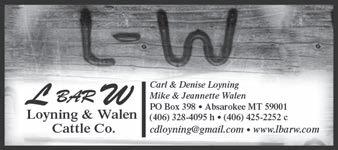
www.ehlkeherefords.com
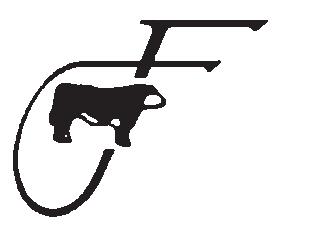
Cell 406-439-4311 info@ehlkeherefords.com
FEMALE PRODUCTION SALE in September • Bulls sell Private Treaty
Feddes
Herefords
Dan 406-570-1602 drfeddes@msn.com
Tim 406-570-4771
tfeddes@msn.com www.feddes.com Modest Birth Massive Meat
2009 Churchill Road Manhattan, Montana 59741
“THE BEST IN LINE 1 BREEDING” Jack and Tresha Holden 3139 Valier Dupuyer Rd. • Valier, MT 59486 406-279-3301 • 406-279-3300 Ranch • 406-450-1029 Mobile www.holdenherefords.com
Burl and Doug McMillan 210560 CR U • Gering, NE 69341 970-326-8391 • burl_mcmillan@yahoo.com
From I-80 exit 48 west of Sidney, Neb. south 1 1/4 miles, west 1 mile, south 3/4 mile
Herd sire: BB 1065 Domino 6081 • Cow herd: Mark Donald and Line 1
Lowell and Carol 402-589-1347 48979 Nordic Rd. Spencer, NE 68777
ANNUAL BULL SALE
Fourth Tuesday in March
Galen Frenzen 50802 N. Edgewood Rd. Fullerton, NE 68638 Galen 308-550-0237 Eric 308-550-0238
Females and club calves for sale private treaty.
August 2023 |
Gene
402-729-5866
Eric 402-239-9838
56095 715 Road • Fairbury, NE 68352 henkelhereford@hotmail.com
Denny and Dixie Hoffman • 406-425-0859

Jason and Kaycee Hoffman • 530-604-5096 Office 308-645-2279 • P.O. Box 287 • Thedford, NE 69166 jason@hoffmanranch.com • www.hoffmanranch.com
Milk, Muscle, Performance and Weight Outcross Pedigrees Bulls and females always for sale. Visitors always welcome!
Jack and Bev Beeson Wayne, NE 68787
Females that Produce
Prolific Disposition
402-375-3404
Cell 402-375-9027
Albert Moeller & Sons
7582 S Engleman Rd Grand Island, NE 68803 308-384-0979

Cattle for sale by Private Treaty and at Nebraska Cattlemen’s Classic


MINIATURE - CLASSIC HEREFORDS www.splittcreekranch.com
Shaun Brott 308-530-4161
North Platte, Nebraska 69101
Judy Splitt 308-530-1287 judysplitt@gmail.com
Annual Bull Sale • First Saturday in February 45060 Upstream Rd. • Taylor, NE 68879 Brent and Robin Meeks • 308-942-3195 upstreamranch@gmail.com www.upstreamcattle.com
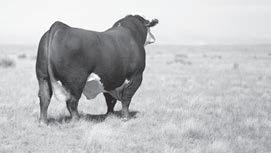
P.O. Box 306 • Hyannis, NE 69350
James 308-458-2406
Bryan 308-458-2865 • Bob 308-458-2731 1417 Rd. 2100 Guide Rock, NE 68942-8099
Ron 402-756-3462
rnschutte@gtmc.net www.schutteandsons.net
BERNIE AND STACIE BUZANOWSKI Arthur, NE
308-726-2138
• 406-855-8288 cell
Oshkosh, NE 69154 • www.vannewkirkherefords.com

Joe: 308-778-6049 • Kolby: 308-778-6230 Quality Herefords Since 1892

“The Best of Both” Horned and Polled Genetics
Don, Skeeter, Kari, Brooke and Bryce P.O. Box 239 • Orovada, NV 89425 775-272-3152 Home • 775-272-3153 Fax 209-479-0287 Cell orovadaherefords@aol.com brumleyfarms.com
Horned and Polled Herefords
Bull & Female Sale
Sept. 11, 2023
Chris Beck, Mgr. 618-367-5397
Bob Coker, Owner 916-539-1987 640 Genoa Ln. Minden, NV 89423 www.genoalivestock.com

Loren, Terrie, Hunter and Tanner PO Box 2412 • Minden, NV 89423 775-848-0160
lorenmrnak@aol.com www.mrnakherefordswest.com
AJ
Spindle 5 05-321-8808
Spindle 5 05-252-0228 P.O. Box 2670 Moriarty, NM 87035 www.billkingranch.com
9767 Quay Road O Nara Visa, NM 88430


Pérez - 575-403-7970
Kyle Pérez - 575-403-7971
Drew Pérez - 806-640-8340 Info@PerezCattleCo.com PerezCattleCo.com

PREDICTABLE GENETICS
Sheldon Wilson 575-451-7469 • cell 580-651-6000 1545 Dry Cimarron Hwy • Folsom, NM 88419
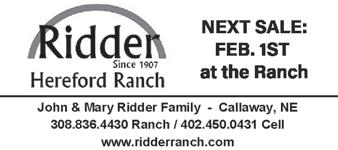
Timothy Dennis 315-536-2769
315-856-0183 cell
tdennis@trilata.com


3550 Old County Rd. Penn Yan, NY 14527
HOME OF CHURCHILL BROADWAY 104J
John and Ted Kriese – 4385 Italy Hill Road – Branchport, NY 14418 315-856-0234
hereford@frontiernet.net


www.fingerlakescattle.com
BREEDING CATTLE BUILT FROM THE GROUND UP
Brent Creech 14926 Taylor’s Mill Rd. Zebulon, NC 27597
919-801-7561
14503 91st St. S.W.Bowman, ND 58623 www.mrnakherefords.com
Mohican Polled Hereford
4551 S.R. 514 Glenmont, OH 44628
Alexis
Mohican
Farm
Robbie & Tracie Gipson 918-774-4795
g4gcattleco@gmail.com
Bulls & Females available for sale private treaty
Ralph & Stephanie Kinder, Owners 790250 S Hwy 177 Carney, OK 74832 (405) 714-3101 ralph@headquartersranch.com headquartersranch.com
23731 NS 157 Rd. Laverne, OK 73848 Milton 580-273-9494 Van 580-552-1555 van1messner@gmail.com
Paul Laubach 72251 N 2080 Rd • Leedey, OK 73654 Cell 580-822-5089 • paul@pandrherefords.com PandRHerefords.com
TRENT RAY
C. Porter Claxton Jr. 240 Upper Flat Creek Rd. Weaverville, NC 28787
www.tmfherefords.com tmfherefords@icloud.com Farm LLC

828-645-9127
cpcfarm@msn.com

Sales: Wayne Welch 828-768-3024
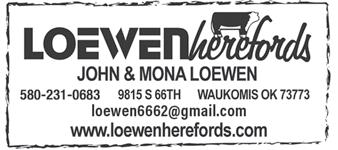
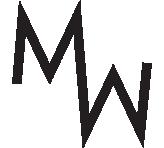
Visit our website to see current offering — www.claxtonfarmcattle.com



Ten
T ripleTT polled Herefords
James Triplett 127 Roseman Ln. • Statesville, NC 28625
704-876-3148 (evening) 704-872-7550 (daytime)
VisiT ors Welcome
Bulls and Females For Sale Private Treaty
Will-Via Polled Herefords
Lavette and Brenda Teeter
2075 Landis Hwy. (NC Hwy. 152) Mooresville, NC 28115
704-662-5262
Bulls & Females available for sale private treaty
12700 E. Lone Chimney Road Glencoe, OK 74032 309-299-2387
trcattleco@hotmail.com
BULLS FOR SALE YEAR-ROUND
Registered Herefords George and Karen Sprague 85777 Vilhauer • Eugene, OR 97405 541-465-2188 gks@bar1ranch.com • www.bar1ranch.com
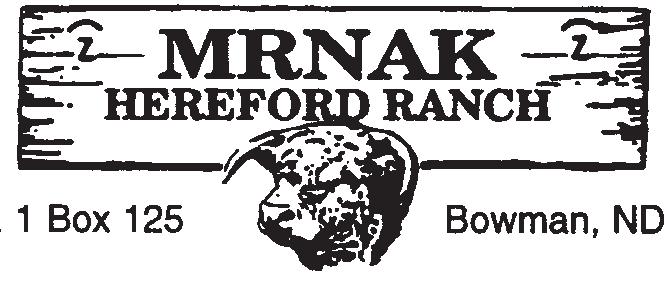
Mike and Lotsee Spradling 918-640-7711 918-245-8854
Registered Polled Herefords Pecans flyinggranchss@aol.com
David and Lynda Bird 45863 Crow Rd. • Halfway, OR 97834 541-742-5436 • Cell 541-403-2828 • bird@pinetel.com
|
Don and Madeline Hennon Sewickley, PA 15143 412-741-2883
Fax 412-741-2883
Robert Glenn, manager 724-748-4303 www.barhfarm.com
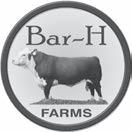

Homozygous Polled Herefords
Don, Peg, Seth and Bridget Zilverberg 18542 326th Ave. Holabird, SD 57540 605-852-2966 www.barjz.com cattle@barjz.com
75th Annual Production Sale Feb. 20, 2024
Gerald and Janelle Bischoff 20025 399th Ave., Huron, SD 37350 Gerald 605-350-0979
Garret 605-461-1555
Matt 605-350-0980 ravinecr@santel.net • www.ravinecreekranch.com
Annual Production Sale - 2nd Wednesday in March

Gordon and Thordys 39462 178th St. Frankfort, SD 57440 605-472-0619
Michael and Becky 605-224-4187 605-870-0052 blumeherf@yahoo.com
Tim and Philip Eggers 25750 476th Ave., Sioux Falls, SD 57104 Tim cell 605-929-6560 Philip cell 605-351-5438 eggerssouthviewfarms@gmail.com
I-29 Bull Run Sale 2nd Saturday in March
21115 344th Ave. Ree Heights, SD 57371
Keith, Cheryl, Erin and Matt Fawcett • 605-870-0161 Dan, Kyla, Hollis and Ivy Fawcett • 605-870-6172 Weston, Kristin, Falon and Jensen Kusser www.fawcettselmcreekranch.com
P.O.
Lance Pankratz, owner
Office 605-925-7611
Cell 605-359-9221
Home 605-925-4283
Fax 605-925-4354
44130 279th St. Freeman, SD 57029
lagrand@gwtc.net www.lagrandranch.com
29188 303 Ave., Clearfield, SD 57580 605-557-3246
Jerome 605-842-5212 • jeromeo@goldenwest.net
James 605-359-4006
14831 Hereford Rd., Hoven, SD 57450
Shannon 605-769-0203
Jacob 605-769-0552 Peter 605-281–0471 47229 232 St. Colman, SD 57017
jacob@rauschherefords.com • RauschHerefords.com

America’s #1 Dams of Distinction Cow herd
• Private Sales Year-round
• Bull and Female Sale Third Monday in February

Consignment sales and private treaty

Cody Williams, Cell 605-695-0931
Dave Stenberg 605-997-2594 • Cell 605-530-6002
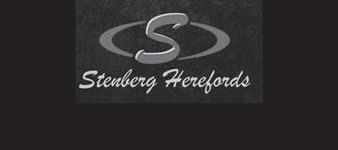
Lindsey Wolles 605-496-2487
Bill and Paula Thorstenson 30491 131st St. • Selby, SD 57472 605-649-7940 • Cell 605-845-6108 wpthorstenson@venturecomm.net paulathorstenson@yahoo.com
TENNESSEE
Mark
Kay Frederickson 19975 Bear Ridge Rd. Spearfish, SD 57783
605-642-2139 Cell 605-645-4934
PYRAMID BEEF
Bull Sale
First Saturday in December
Nate and
Cell 605-254-4872 Shawn and Sarah Tatman 307-673-4381
Horned & Polled Herefords
11341 357th Ave. • Leola, SD 57456 Colin 605-216-7506 • Miles 605-277-5048 cmbhoffman@msn.com www.hoffmanherefords.com
JBN
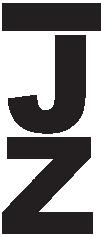
Registered Herefords

Jim and Jeannine Bockwoldt 22370 152nd Place, Box Elder, SD 57719 605-923-2366
jbnlivestock@rushmore.com • www.jbnlivestock.com
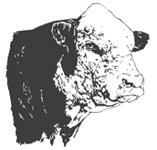
Jim and Kay Coley and Family
140 Morgan Rd., Lafayette, TN 37083 615-804-2221 • coleyherefords@gmail.com www.coleyherefords.com
PO Box 215, Cross Plains, TN 37049 615-478-4483 billymjackson@aol.com website: jacksonfarmsherefords.com


Jerry Roberson 615-325-1883 P.O. Box 492 Portland, TN 37148
Mike Rogan 1662 McKinney Chapel Rd. Rogersville, TN 37857 423-272-5018 423-754-1213 Cell roganfarm@yahoo.com

Steven Lee 615-799-8085 cell 615-456-6165
5121 Bedford Creek Rd., Franklin, TN 37064 triplelranch@msn.com • sleehereford@gmail.com www.lllranch.com

Since 1945 – Quality Line 1 Cattle For Sale!
Winn Woodard 615-389-2624 • Phil Spicer 615-351-2810
4948 William Woodard R d. S pringfield , TN 37172
Your source for top end bulls and females.

Jimmy, Claudia and Precious Atlas 4920 CR 401 • Grandview, TX 76050 214-202-5178 • 817-456-4691 atlasfarms@sbcglobal.net
Bill or Chad Breeding 1301 N. Lions • P.O. Box 186 8 06-868-4661 or 806-570-9554 Miami, TX 79059 b reeder@amaonline.com
Pete and Angela Case P.O. Box 240, Mertzon, TX 76941 325-650-6209 • pete@caseranch.com www.caseranch.com
Jack & Lyn Chastain 3924 Burkett Dr Ft. Worth, TX 76116 817-821-3544

Farm located at Mineral Wells, TX
Box 10, Comanche, TX 76442 • Office 325-356-2284 John Dudley 325-642-0745 Tom Dudley 325-642-0748 john@dudleybros.com www.DudleyBros.com Registered Herefords Since 1938

Harry and Cheryl Grett 512-303-5714
P.O. Box 969 Elgin, TX 78621 g3ranch@aol.com

Scott, Alise, Ilissa, Bethany and Audrey 1950 Skylark Rd. • Gilmer, TX 75645 nolanherefords@aol.com Res. 903-797-6131 Cell 903-738-5636
Terri Barber 817-727-6107
Jason Barber 817-718-5821

Dale Barber 806-673-1965
Justin Barber 806-681-5528
Brett Barber 806-681-2457
Mary Barber 806-930-6917 10175 F.M. 3138
• Channing, TX 79018 www.barberranch.com • office@barberranch.com
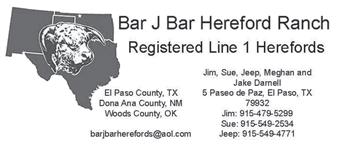
Maynard and Sandi Warnken Kevin Warnken, manager P.O. Drawer 29 • Schulenburg, TX 78956 979-561-8846 • 979-561-8867 fax Kevin cell 979-743-0619 rockinw@cvctx.com • rockinwranch.net

Randy Wood, manager 325-396-5526

5749 Rocking Chair Ln. Ft. McKavett, TX 76841 www.therockingchairranch.com
Raising cattle in Texas since 1855
Joey and Susan Skrivanek, owners 407 W. Mustang • Caldwell, TX 77836 Cell 979-224-4698 • Office 979-567-3131 j.skrivanekranch@outlook.com
Larry Woodson Bonham, TX 214-491-7017
larrywoodson@gmail.com www.stillriverranch.com
Horned and Polled
Pete Johnson, owner St Hwy 94 • Lufkin, TX 75904 936-465-1672 • pljmhj@yahoo.com
http://www.sunnyhillranchherefords.com Southeast Texas Bull Sale Headquarters

4609 Airport Freeway Ft. Worth, Texas 76117 817-831-3161
texashereford@sbcglobal.net www.texashereford.org
williams family H erefOrds
Herb and Susan Williams, Owners P.O. Box 567, Decatur, TX 76234

Herb Cell 940-393-1651 • Office/Ranch 940-466-3381 Fax 940-466-7237 Williamsfamilyherefords.com • herbsusan@msn.com
Since 1891, family owned and operated for five generations! Hwy. 51 north, 10 miles from Decatur, Texas Registered/Commercial Hereford Cattle

Rod Curtis 435-770-0509 rod@cachefeeds.com herefords1@hotmail.com
Bill and Linda Johnson 3350 N. St. Rd. 32 Marion, UT 84036 435-783-4455 bjohn@allwest.net
Cattle for sale at the ranch
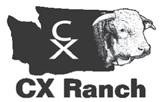
3847 W. 2200 S. • Wellsville, UT 84339 www.jbherefords.com
Billy Jensen 435-764-2422 Kyson Smith 435-421-9032 jbherefords@gmail.com
Jensen Brothers Herefords – Since 1920


Jonathan and Craig Johansen Castle Dale, UT • 435-650-8466 johansenherefords@gmail.com www.johansenherefords.com Line One Performance Breeding Since 1979
Jake Rees 801-668-8613 Scott Rees 801-949-8960 Roger Rees, DVM 801-913-5747 Herefords & Angus ReesCattle.com reescattle@gmail.com
2235 E. Rees Ln.•Morgan , UT 84050
Featuring Polled Descendants of J215
Thistle Tree Farm
Linda Lonas P.O. Box 187 • Purcellville, VA 20134 703-850-5501 Cell • 703-368-5812 Office
Bill and Terrilie Cox 688 Pataha St. Pomeroy, WA 99347 509-566-7050 cell cxranch@live.com

Kevin and Janice Bennett 3752 Ollie Bell Rd. Benton, WI 53803 608-778-8685 kevinjanicebennett@gmail.com www.sandrockranchherefords.com
Jay and Janice Berry 3049 C.R. 225 Cheyenne, WY 82009 307-634-5178 • www.wherecowmenbuybulls.com
McClun’s Lazy JM Ranch
Polled
SINCE 1943
SELLING 1,500 HEREFORDS ANNUALLY “The great feedlot performance cattle”
The McIrvins Box 99 Laurier, WA 509-684-4380
Winter Headquarters 646 Lake Rd. Burbank, WA 99323 509-545-5676


Annual
westfall POlled H erefOrds
Jim Westfall, owner 304-927-2104 • cell 304-377-1247 jimwestfall2104@gmail.com
Lucille Westfall, herdsman 304-532-9351

1109 Triplett Rd. • Spencer, WV 25276
Bulls and Females For Sale
BILL WILHELM • 1046 RIFLE PIT RD., SUNDANCE, WY 82729

Billy Elmhirst R.R. 1 Indian River, ON Canada K0L 2B0 705-295-2708 • ircc@nexicom.net elmlodgeherefords.freeyellow.com
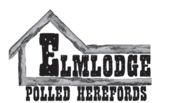
Your Source For Success
MEDONTE HIGHLANDS Polled Herefords Jack McAughey K evin Brown 905-625-3151 705 -330-4663 Farm • Orillia, Ont. 705-326-6889 Business Office: 3055 Universal Dr., Mississauga, Ont. L4X 2E2


Eddie Burks , Auctioneer 531 Rick Rd. Park City, KY 42160 270-991-6398 Cell endburks@hotmail.com




7710 North State Rd 56 Vevay, IN
www.JamesFBessler.com Jim@JamesFBessler.com
Jim Bessler 815-762-2641 4812 McBreyer Pl. Fort Worth, TX 76244-6083 O: 817-562-8980 • Fax: 817-562-8981
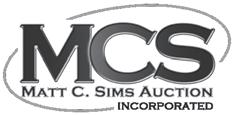


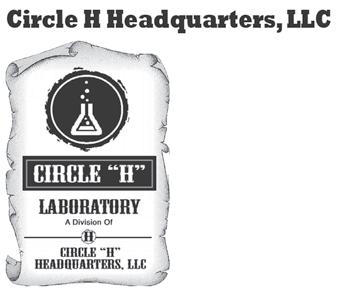


Joel Birdwell, Auctioneer 5880 State Hwy. 33 Kingfisher, OK 73750
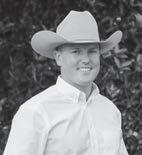




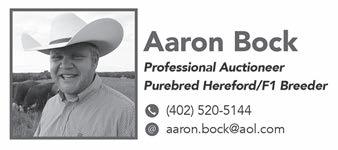

Home: 405-375-6630
Cell: 405-368-1058
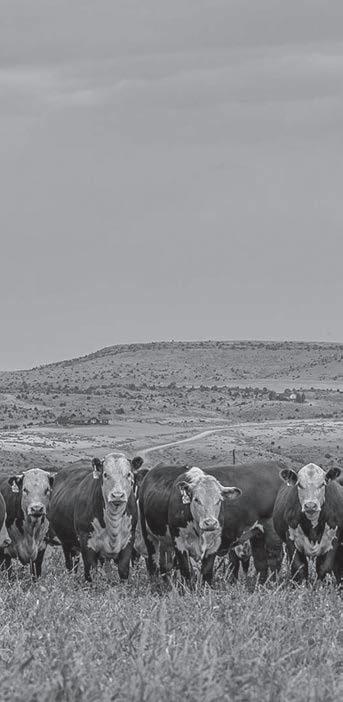










https://iowahereford.org

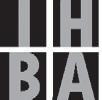


Aug.
Iowa
Iowa
Aug.
Iowa
Iowa
Stops
FOR


Aug.
Aug.
Bill’s

“Calendar of Events” is a listing of Hereford sales and events known to our staff. Italicized dates denote shows and events. Non-italicized dates denote sales. To make the calendar concise we have used the following abbreviations: association, assn.; international, int’l; junior, jr.; mountain, mtn.; national, nat’l; northeast, NE; northwest, NW; performance tested, PT; southeast, SE; southwest, SW; and university, Un.
17 Mohican West Herefords Female Sale, Laurel, Mont.
17 Oklahoma State Fair Open Show, Oklahoma City
22 Sierra Ranches Western Treasures Vol. VII, Modesto, Calif.
23 417’s Finest Hereford Sale, Fair Grove, Mo.
23 Forrest Polled Herefords Production Sale, Saluda, S.C.
23 Golden Harvest Sale, Fremont, Mich.
23 The Big E Hereford Open Show, W. Springfield, Mass.
24 WMC Cattle Co. Ladies of The Ozarks Female Sale, Wasola, Mo.
25 Ad deadline for November
Hereford World
27 Ernst Herefords Complete Dispersal, Greeley, Colo.
29 West Virginia Polled Hereford Assn. Mtn. State Spectacular Fall Sale, Weston
29 World Beef Expo Open Show, Milwaukee, Wis.
30 Delaney Herefords/Atkins Herefords
Genetic Opportunity Sale, Tea, S.D.
30 East Texas State Fair Open Show, Tyler
30 Indiana Hereford Extravaganza Sale & Annual Meeting, Lebanon
Highlands Polled Herefords Autumn Alliance XLI Sale, Orillia, Ontario
George, Tammy, William and Andy Ward
3404 Shady Grove Rd. Providence, NC 27315 336-388-2177
Cell 434-251-3637 gwwardjr@centurylink.net
Bob Schaffer, Owner-manager 3320 Deer Track Rd. Spotsylvania, VA 22551 540-582-9234 bob@deertrackfarm.com www.deertrackfarm.com

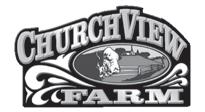
The Baldwins 2 Church View Rd. Millersville, MD 21108
Bill 443-871-0573 Tara 443-871-0520 Lindsey 443-306-3218 webald@aol.com
Bob and Pam Rhyne 3700 Peach Orchard Rd. Charlotte, NC 28215 Bob’s cell 704-614-0826
Kim, Alexis and Courtney Eudy 10945 Hickory Ridge Rd. Harrisburg, NC 28075 Kim’s cell 704-589-7775
FOUNTAIN VALLEY FARM

The Bachtel Family Westminster, MD Randy 443-340-4418
rbachtel@bprsurveying.com

Brooks 443-340-4419 brobachtel@hotmail.com
Jay and Shelly Stull 10718-A Liberty Rd. Frederick, MD 21701 301-898-8552
eastsidehereford@comcast.net Visitors welcome!
248 River Bend Ln. Smithville, WV 26178
Derek Haught 304 – 477–3818 — Home 304 –299 –9170 — Cell
Annual Bull Sale: Feb. 19, 2024
KNOLL CREST FARM
“Serving the beef industry since 1944” P.O. Box 117 Red House, VA 23963

Office 434-376-3567
Paul S. Bennett 434-941-8245
Jim G. Bennett 434-664-7935
Brian R Bennett 434-664-8309
Dalton G. Bennett 434-664-7946
Scott R. Bennett 434-660-7268

knollcrest@knollcrestfarm.com
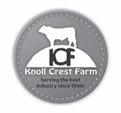
Slaytons’ Hereford and Angus Performance Seedstock



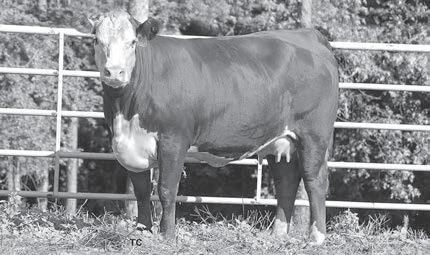

J. Paul and Bette Slayton 2272 Dibert Rd. Bedford, PA 15522 814-623-0772
717-805-1376 – cell paul@slaytonsbeardance.com


